no-fly zone
description: territory where aircraft aren't allowed to fly over
93 results

The Achilles Trap: Saddam Hussein, the C.I.A., and the Origins of America's Invasion of Iraq
by
Steve Coll
Published 27 Feb 2024
-defended autonomous Kurdistan. To protect a much larger area of Kurdistan beyond the initial one, the Bush administration and European allies soon added to the safe haven a no-fly zone patrolled by Western fighter jets. Operation Provide Comfort was a reactive, improvisational policy, driven by the need to respond to a humanitarian emergency in which the United States was complicit. Bush and his advisers could hardly have imagined that the Kurdish no-fly zone would become a costly pillar of an ambiguous, frustrating U.S. commitment in Iraq for many years to come. * * * — The reprisal killings carried out by Saddam’s regime after the Iraqi uprisings rivaled the Anfal in scale and cruelty but never achieved the Anfal’s global notoriety.
…
But Clinton was not about to risk political capital at the outset of his presidency by talking to Saddam.[16] * * * — On Inauguration Day for America’s forty-second president, a chilly Wednesday in Washington, Bruce Riedel, the National Security Council’s director of Near East and South Asian affairs, huddled in the Situation Room, the secure conference room underneath the West Wing, to monitor firefights in the Iraqi no-fly zones. Just about every day now, “we were shooting at them, they were shooting at us,” he recalled. The incidents figured into Clinton’s first update briefings as president, as he prepared to celebrate that night at festive balls across Washington. Early the next morning, Anthony “Tony” Lake, the president’s national security adviser, summoned Riedel to the White House and asked him to explain the “rules of engagement” in the no-fly zones, meaning the orders and restrictions given to American pilots by the Pentagon concerning when the pilots could shoot at Iraqi targets.
…
The basics were: If an Iraqi aircraft flew into a no-fly zone, an American plane would shoot it down. If an Iraqi aircraft flew into a zone and then escaped, an American plane would chase it and shoot it down. And if Iraqi ground forces fired at an American patrol plane, the U.S. would destroy the offending Iraqi unit or facility. But there were many subtleties and caveats. Lake and Sandy Berger told Riedel, in essence, “You’re leaning pretty far forward here.” Conflict could escalate without warning. Yes, Riedel acknowledged, but the previous administration was trying to topple Saddam, and the no-fly zones were “part of the process.”
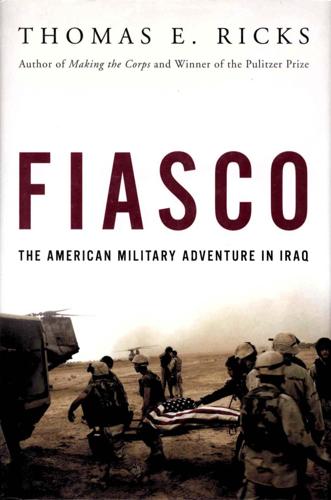
Fiasco: The American Military Adventure in Iraq
by
Thomas E. Ricks
Published 30 Jul 2007
Jeff Huber, the operations officer aboard the aircraft carrier USS Theodore Roosevelt, thought through his doubts about the no-fly mission. "Given that no-fly zones don't make any sense in any traditional airpower context, how can we determine whether one is succeeding?" he asked. It was impossible to tally "Kurds/Shia Moslems not bombed," he noted. He wound up giving the mission a tepid approval. "Many look at the no-fly zone this way: Yeah, it's pretty stupid, but it beats letting international scumbags get away with anything they want and doing nothing about it." The overall cost of the two no-fly zones was roughly $1 billion a year. Other U.S. military operations, such as exercises in Kuwait, added another $500 million to the bill.
…
It was all about internal consumption. If they had wanted to be more serious, even with their weakened military, they could have." In that sense, Saddam's ambiguous stance on the no-fly zones paralleled what we now know to be his handling of weapons of mass destruction. He got rid of his chemical and biological stocks, but wouldn't let international inspectors prove that he had done so, probably in order to intimidate his neighbors and citizens. Likewise, with the no-fly zones, his words were more threatening than his actions, but the U.S. government didn't pick up that signal. Wolfowitz out of power One day in 1996, Paul Wolfowitz toured Gettysburg with a group of specialists in military strategy from Johns Hopkins University's school of international studies, where he became dean after his service under Cheney at the Pentagon. 16 FIASCO Late in the afternoon, as the sun dipped toward Seminary Ridge, Wolfowitz stood at the center of the battlefield, near the spot where the soldiers of Pickett's charge had hit the Federal line and were thrown back by point-blank cannon blasts.
…
It was the kind of slip that can occur in any new administration, but it wound up overshadowing the first foreign trip of a president with notably little overseas experience. "A routine mission was conducted to enforce the no-fly zone," Bush said that day in San Cristobal, Mexico. "And it is a mission about which I was informed, and I authorized. But I repeat, it's a routine mission, and we will continue to enforce the no-fly zone until the world is told otherwise." The U.S. military deemed the strikes essential because the Iraqis were installing a fiber optic communications network in their air defense system that would have greatly increased the threat to U.S. pilots operating in the southern nofly zone.
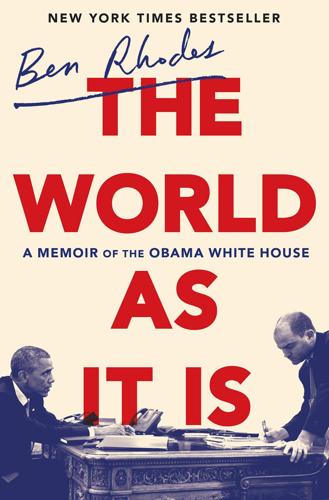
The World as It Is: A Memoir of the Obama White House
by
Ben Rhodes
Published 4 Jun 2018
And then, around seven thirty, we all returned to our seats in the Situation Room, a new set of maps and papers in front of us, a stark menu of options in front of Obama: Bomb Gaddafi’s forces on the ground to stop their advance on Benghazi; put a no-fly zone in place; or do nothing, leaving any action to others. We reconvened for a second meeting, taking the same seats we’d occupied a couple of hours ago. Obama was briefed on the new options, which included a no-fly zone and a more aggressive option to go after Gaddafi’s forces on the ground. At the end of the meeting, Obama told us he’d made a decision. We wouldn’t support the French resolution for a no-fly zone. Instead, Susan would put forward a U.S. resolution that went beyond a no-fly zone, calling for “all necessary measures” to protect civilians on the ground, a euphemism for war.
…
Because the world could now digest the brutal advance of Gaddafi’s forces in real time, whatever happened was on our watch. Members of Congress started to call for a no-fly zone over Libya, so that Gaddafi’s planes would be grounded. Reporters asked us how many more people had to die before Barack Obama did something. Most people in government didn’t want to do anything. The military made it clear that Libya wasn’t a priority—they had two wars to deal with and little desire for a third. A no-fly zone wasn’t just a talking point, it was a complex undertaking that involved eliminating all of Gaddafi’s air defenses and patrolling the skies over Libya indefinitely.
…
When the U.S. government wants to avoid doing something, it avoids producing the options to do something. And so as the days went by, no option for a no-fly zone made its way to Obama, even though it was being debated across Washington and other capitals around the world. Arab leaders told Hillary Clinton that they were prepared to be part of an effort to punish Gaddafi. In Europe, the spotlight-loving French president Nicolas Sarkozy signaled that he was going to push for a United Nations Security Council resolution calling for a no-fly zone. Soon we would have to take a position one way or another, so Obama convened a meeting of his National Security Council on March 15 to decide where we would stand at the UN.
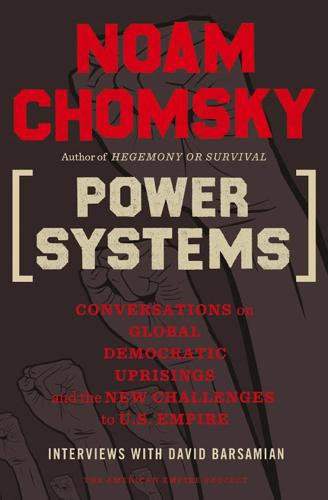
Power Systems: Conversations on Global Democratic Uprisings and the New Challenges to U.S. Empire
by
Noam Chomsky
and
David Barsamian
Published 1 Nov 2012
At the same time as the Obama administration cautioned the various revolutionaries in different countries to “show restraint” and said there was “no place for violence,” the president praised the “unique capabilities” of the United States when it comes to enforcing a no-fly zone over Libya.17 Tariq Ali, in a recent article, calls Libya “another case of selective vigilantism by the West.”18 First of all, we should be clear that there was no Libyan no-fly zone. UN Resolution 1973 did call for a no-fly zone, but the three traditional imperial countries—Britain, France, and the United States—immediately disregarded the resolution and instantly turned to participation on the side of the rebels. So they were not imposing a no-fly zone over the rebel advances. In fact, they were encouraging them and supporting them.
…
We don’t have information from Saudi Arabia—it’s a very closed society—but that’s what it looks like. What about Libya? In Libya, there was an uprising. Then came, actually, two Western interventions. The first intervention was under the rubric of Security Council Resolution 1973, which called for a no-fly zone, a cease-fire, and protection of civilians. That intervention lasted maybe five minutes. The North Atlantic Treaty Organization (NATO) powers, meaning the traditional imperial powers—Britain, France, the United States—immediately joined the rebel forces and became their air force. No cease-fire, no protection to civilians.
…
Humanitarian Law Project, 70–71 Honduras, 7, 110–11 House of Representatives, U.S., 85 Human Development Index, 13 “Human Intelligence and the Environment” (Chomsky), 42 Humanitarian Law Project, 70–71 human rights, 109, 113 violations, 89–92, 95–96, 145 Humboldt, Wilhelm von, 149 Hume, David, 79, 81 Hussein, Saddam, 17, 71, 95 imperialism, 1–33 saltwater fallacy, 3–4 terminology, 3 India, 7, 9, 10–11, 17–23, 38, 50, 51, 107, 164 Bhopal explosion, 174 British rule, 20 -China relations, 20–22 economic growth, 7, 10–11, 20–23 -Israel relations, 20, 21 natural resources, 17–20 neoliberalism and, 19–22 TAPI pipeline and, 17–18 -U.S. relations, 20–22 war, 20 indignados, 47 Indonesia, 17 intellectual culture, 79, 81, 104–6, 141 intellectual property rights, 107–8 International Energy Association (IEA), 121–22 International Monetary Fund (IMF), 47 International Organization for a Participatory Society, 171 international relations (IR) theory, 8, 63 Internet, 105–13 security, 107–13 iPhone, 145–46 Iran, 18, 60, 62, 63, 90–91, 93, 95–98, 111, 112, 114 nuclear threat, 112 TAPI pipeline and, 18 Iran-Iraq War, 97 Iraq, 16–17, 21, 60, 61 Kurds, 95–96 nationalism, 55–56 U.S. war in, 16–17, 55–56, 62–63, 114–16 Islam, 60 political, 49, 61 radical, 61, 100 Israel, 20, 21, 96, 112 -India relations, 20, 21 -Lebanon relations, 63 Palestinian conflict, 46 -Turkey relations, 92–94 -U.S. relations, 21 Jacob, François, 129 James, William, 130 Japan, 5, 8, 58, 131, 139 Jefferson, Thomas, 3, 172 job creation, 76, 87 Kagan, Elena, 70 Karachi, 22 Keller, Bill, 144 Keller, Helen, 134, 135 Kennan, George, 57 Kennedy, John F., 2–3 Vietnam policy, 2–3, 97 Khadr, Omar, 72–73 King, Martin Luther, 30–31, 66, 105 Klein, Naomi, 123, 124 Kurds, 21, 89–92, 95–96 labor, 38, 81, 87, 169 anti-labor movements, 40 Arab Spring, 44–55, 60–64, 67 Chinese, 9–10, 11–12 collective bargaining, 40–41 demonstrations and strikes, 29, 33, 35, 40–43, 68, 120, 146 Depression-era, 23, 40, 67–68 global, 9–12, 76–77, 169–70 organized, 23–25, 39–41, 67–68, 147, 171 rustbelt, 11–12 solidarity, 39–41 unemployment, 22–23, 38, 66, 76 unions, 24–26, 33, 39–41, 68, 79, 147, 171 language, 126–42 biological acquisition of, 129–36 culture and, 138–40 sensory deprivation and, 134–35 similarity of, 140–41 study of, 137–38, 142 universal grammar, 126–59 Latin America, 4–7, 22, 61, 160–62, 164 drugs, 160–62 integration of, 6–7, 47, 161 U.S. military bases in, 6–7 Laxness, Halldór, 106 Lebanon, 63 Lee, Ching Kwan, 11 Left, 23, 25, 32–33, 59, 117, 147, 149, 150, 151 student, 73–74 Left Forum, 25, 27, 33 libertarianism, 157, 158, 163 Libya, 50–54, 91 no-fly zone, 50–52 Lippmann, Walter, 81 Madison, James, 84, 85 Magna Carta, 59, 72, 116 Mandela, Nelson, 71 Manning, Bradley, 113, 114 Marcos, Ferdinand, 17 market system, 80–81 Marx, Karl, 173, 175 Massachusetts Institute of Technology, 13, 37, 105, 122, 134, 136, 149 mathematics, 137, 138 McCain, John, 103 McCarthyism, 24 McKiernan, Kevin, 95 media, 32, 66, 150, 151 mental slavery, 34–35, 101–25 Mexico, 11, 152–53, 162, 175 Middle East, 17, 44–64, 89–100, 111 Arab Spring, 44–55, 60–64, 67, 112–13, 168 oil, 21, 49–55 Turkish-Israeli relations, 92–94 uprisings, 44–64 military, 5, 98 Arab Spring, 44–55, 60–64 detention, 70–73 police, 119–20 U.S. bases in Latin America, 6–7 Mobutu Sese Seko, 17 Mondragon, 171 Montgomery, David, The Fall of the House of Labor, 23 Morgenthau, Hans, 63–64 The Purpose of American Politics, 64 Morocco, 46 Mubarak, Hosni, 45, 47, 62 Nader, Ralph, 150 NAFTA, 163, 175 Nasser, Gamal Abdel, 61 National Defense Authorization Act, 70 Native Americans, 22 natural gas, 17–18, 164–65 natural resources, 17–22, 164–65 Navy, U.S., 6–7, 14, 52, 116 Nazism, 28–29, 115–16 New Deal, 23, 82 New York, 67, 100, 166 New York Times, 60, 81, 89–91, 124, 144–45, 160 Ngo Dinh Diem, 2, 3 Ngo Dinh Nhu, 2, 3 Nicaragua, 7 9/11 attacks, 14, 15–16, 139 Nixon, Richard, 125, 150 No Child Left Behind, 153 Non-Proliferation Treaty, 18 North Africa, 46–48, 57, 60 North Atlantic Treaty Organization (NATO), 50, 51, 91, 92 Norway, 115 nuclear weapons, 97, 98, 100, 110, 112, 176 Nuremberg Trials, 115–16 Nystrom, Paul, 36 Obama, Barack, 7, 33, 63, 90–91, 93, 110, 111, 114, 153, 162, 164 Afghanistan War and, 14–15 civil liberties and, 70–73 Libya and, 51–52 organized labor and, 41–42 2008 election, 102–3 Obamacare, 124 Occupy movements, 47, 65–69, 74–77, 118–21, 146, 168, 177 oil, 21, 22, 49–55, 124 Orwell, George, 19, 97 Pakistan, 16, 17, 22, 61, 98–100, 110 drone attacks on, 18–19, 98–99 nuclear industry, 98–100, 110 TAPI pipeline and, 18 Palestine, 46, 72 -Israel conflict, 46 Palmer raids, 68 Pamuk, Orhan, 91 Panama, 7 Panetta, Leon, 114 Pashtuns, 99 Patterson, Anne W., 99, 110 Paul, Rand, 157, 162, 163 Paul, Ron, 75, 124–25, 157, 163 pensions, 12, 22, 24, 26 Peres, Shimon, 93 Peshawar, 16 pharmaceutical companies, 107–8 Philippines, 4, 17 Pinochet, Augusto, 61 piracy, 107–8 political Islam, 49, 61 Political Science Quarterly, 82 police repression, 119–20 politics, 32, 41, 57, 59, 121, 142–45, 171 electoral, 102–3, 117–19 labor demonstrations and, 41–43 poverty, 6, 66, 82, 84 Powell, Colin, 115 Powell, Lewis, 150–51 Powell memorandum, 150–51 power systems, 34–35, 69 aristocrats and democrats, 160–78 chains of submission and subservience, 34–43 global shift, 5–13, 58, 76–77 language and education, 126–59 mental slavery, 101–25 new American imperialism, 1–33 uprisings, 44–64 privatization, 11, 38, 39, 40, 156–57, 167 Progressive Labor (PL), 73 propaganda system, 35–40, 66, 80, 82, 102, 119, 122–24 property rights, 84, 85 public, power of the, 78–81 public education, 37–39, 147–48, 153–56, 166–68 public relations, 35, 79–81, 102–3 Qasim, Abd al-Karim, 61 Race to the Top, 153 racism, 3, 31, 92 Ravitch, Diane, 154 Reagan, Ronald, 62, 71, 82, 95, 99 recession, 23, 48, 86–89 Red Scare, 23, 68, 120 Reich, Robert, 170, 172 Reilly, John, 122 Republican Party, 41, 57, 75, 76, 124, 125 Revolutionary Armed Forces of Colombia (FARC), 72 Ribbentrop, Joachim von, 115 Right, 23, 32, 150–51 Riyadh, 52 Romney, Mitt, 57–58, 75 Roosevelt, Franklin D., 14, 23, 54 Roy, Arundhati, 22, 29, 31 Russia, 17–18, 20, 50, 61, 98, 102, 145 rustbelt, 11–12 Saharawi movement, 46 saltwater fallacy, 3–4 Saudi Arabia, 21, 49, 52, 61, 99, 111, 144 science, 142–43, 144 education, 154–55 modern, 143 sectarianism, 73–74 Seib, Gerald, 54 self-destruction, 42–43 Senate, U.S., 63, 85 sensory deprivation, 134–35 Shiites, 52–53 Singh, Manmohan, 19 Sino-Indian War, 20 slavery, 3, 34, 36, 51 end of, 34, 35, 36 mental, 34–35, 101–25 Slim, Carlos, 11 Smith, Adam, 8–9 social Darwinism, 157 social media, 105, 107, 145–47 Social Security, 39, 156–57 solidarity, 38–41, 146–47, 159 South Africa, 21, 50–51 apartheid, 71 South America, 6, 7, 57, 60, 161 Southeast Asia, 4, 60 South Korea, 9, 17 Spain, 4, 6, 33, 87 sports, college, 154–55 Stack, Joseph, 25–26, 29 Stalin, Joseph, 61 Stohl, Bev, 105 Stop Online Piracy Act, 107 strategic hamlets, 2 student activism, 73–74 submission and subservience, chains of, 34–43 Summit of the Americas (2012), 160–61 sunbelt, 11, 12 Sunnis, 52–53 Supreme Court, U.S., 70, 150 Buckley v.

Work! Consume! Die!
by
Frankie Boyle
Published 12 Oct 2011
Well, we sent him into an unnecessary war with inferior equipment and a breathtaking ignorance of historical precedent, so it was probably pretty easy. I really don’t understand the no-fly zone in Libya. How can we designate a no-fly zone and then whizz about it in our planes? It has all the logic of a parent in McDonald’s telling their kids they’re embarrassing them. Presumably the reason coalition forces have been blowing up tanks and buildings is because they’re worried they might take to the skies like migrating geese. Instead of a no-fly zone, Cameron should just parachute in whoever was running Britain’s transport network last winter. British Typhoons reduced some schools and hospitals to barely functioning messes.
…
People may be wondering where Britain is getting all these free mobile phones from that we are handing to the young radical Muslims in Libya. They’re mainly confiscated from the young radical Muslims that we put in Belmarsh. An American fighter plane crashed in a field near Benghazi. If you ask me, that was enforcing the no-fly zone a bit too strictly. What a laugh it would have been if it had landed on the house of Lockerbie bomber al-Megrahi. Not that he’d have been in; he spends most afternoons waterskiing. The Scottish Parliament still argue they did stringent checks that al-Megrahi definitely had a note from his mum asking for him to be excused from prison.
…
My sketch idea is about Peter Kay taking a heroic dose of magic mushrooms and becoming a politically conscious comedian. He then has to do his stand-up to huge stadiums of folk expecting jokes about the types of biscuits your nan buys, but feels compelled to deliver groundbreaking anarchist routines. He berates Cameron for Libya. ‘No fly zone? We’re targeting people who clearly can’t fly and blowing them 15 feet into the air!’ he yells with trademark camp exasperation. The punters get bored and heckle helpfully with stuff like: ‘Garlic bread, Peter! Come on, pal! Garlic bread!’ ‘Garlic bread? Garlic bread? We’re fighting three fucking wars here, mate!’
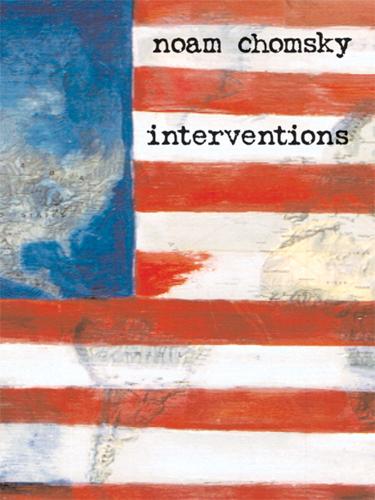
Interventions
by
Noam Chomsky
A special “spike” started in late August (for a September total of 54.6 tons). “In other words, Bush and Blair began their war not in March 2003, as everyone believed, but at the end of August 2002, six weeks before Congress approved military action against Iraq,” Smith wrote. The bombing was presented as defensive action to protect coalition planes in the no-fly zone. Iraq protested to the United Nations but didn’t fall into the trap of retaliating.1 For U.S.-U.K. planners, invading Iraq was a far higher priority than the “war on terror.” That much is revealed by the reports of their own intelligence agencies. On the eve of the allied invasion, a classified report by the National Intelligence Council (NIC), the intelligence community’s center for strategic thinking, “predicted that an American-led invasion of Iraq would increase support for political Islam and would result in a deeply divided Iraqi society prone to violent internal conflict,” Douglas Jehl and David E.
…
It is a rational calculation, on the assumption that human survival is not particularly significant in comparison with short-term power and wealth. And that is nothing new. These themes resonate through history. The difference today in this age of nuclear weapons is only that the stakes are enormously higher. NOTES 1. On the illegality of the no-fly zones, and the grim effects on civilians in earlier years, see von Sponeck, A Different Kind of War (2006). The Legacy of Hiroshima and the Present Terror AUGUST 2, 2005 This month’s anniversary of the bombings of Hiroshima and Nagasaki prompts somber reflection and fervent hope that the horror may never be repeated.
…
See also Shiite Muslims; Sunni Muslims Mueller, John, 3 Mueller, Karl, 3 Mueller, Robert S., 38, 175 Mukerjee, Pranab, 173 Nader, Ralph, 95 Napoleon I, 54 Nasrallah, Sayyed Hassan, 189 National Guard deployed to Iraq, unavailable in New Orleans, 147 national health insurance American public opinion, 93, 131–132 National Intelligence Council, 135 national security, 30 and elections, 37 Israel, 33 U.S., 14 National Security Strategy 2002, 21, 26, 27, 36, 177 nationalism, 7 as U.S. enemy, 143 NATO, 108 natural gas, 169, 170, 171 Nazi philosophy, 142 echoed in the White House, 106 Necessary Illusions (Chomsky), xviii–xix Negroponte, John, 89–92, 115–116 “neoliberalism” neither new nor liberal, 194 Netanyahu, Benjamin, 82 New Generation Draws the Line, The (Chomsky), 179 New Orleans flooding, 2005, 147–149 New York Times, xi–xiii, xvii–xx New York Times Syndicate, xiv newspapers, xi–xxi syndicates, xiv–xv Nicaragua, xix U.S. covert war against, 90–91 9/11 terrorist attacks. See September 11, 2001, terrorist attacks Nixon, Richard, 68, 204 “no-fly zones,” 135, 136 Norris, John, 179 North Korea, 14, 36, 45–50, 73 and Israel, 48–49 Northeast Asia, 46–47 Northern Ireland, 32 Nuclear Non-Proliferation Treaty, 125–126, 137–138, 174 and Iran, 183, 185 flouted by U.S.-India agreement, 172–173 U.S. refuses to fulfill obligations, 138 nuclear power Iran, 181–182, 183 Nuclear Suppliers Group, 174 Nuclear Terrorism (Allison), 139 nuclear weapons, 36, 125–128, 137–140, 181–186 forecast strike on U.S., 139, 173 India, 172–173 Iran, 182, 184, 209 Iraq, 117 not mentioned in UN charter, 112 North Korea, 48 public opinion, 185–186 Russia, 127 and terrorism, 137 U.S., 88, 138–139 Nunn, Sam, 127, 139 Nuremberg war crime trials, 57, 106, 177–178 ocean salinity balance threatened by melting ice sheets, 153 Office of Foreign Assets Control (OFAC), 87 oil, 1, 8, 10, 25, 112, 208 discounts for low-income communities, 155 international trade 169–170 Iran, 181 Iraq, 79, 85–86, 135, 162, 202 no more important than pickles, we’re to believe, 162 Northeast Asia, 46 Saudi Arabia, 163 South America, 156 Venezuela, 155–156, 171, 198 UN Oil-for-Food program, 60 U.S. and “Middle East energy resources,” 47, 208 Olmert, Ehud, 33–34 oped pages, xi–xx Oren, Amir, 29 Organisation for Economic Co-operation and Development, 129 Orwell, George, 142 and naming of acts of Congress, 172 Owen, Taylor, 203–204 Oxford Research International, 78 PDVSA, 155 Page, Benjamin, 217 Page, Clarence, xx Pakistan, 1–2, 20 earthquake, 2005, 171–172 nuclear weapons, 128 Palestine, 2, 4, 25 elections, 165–168 Israeli occupation, 29–34, 63–66, 81–84 Palestine Liberation Organization, 187–188, 190 Palestinian-Israeli conflict, 29-34, 63-66, 81–84, 165–168, 187–192 American public opinion, 66, 84 binational state feasibility, 83 Israeli public opinion, 84 Sharon-Abbas cease-fire (2005), 117, 118 two-state settlement (proposed), 81, 83–84, 166, 189 and U.S., 81, 84, 165–166 paramilitary forces, 69 Patterson, Thomas, 94 peace movement, 20–21 Pedatzur, Reuven, 178 people the “great beast,” 105 “disruptive special interests,” 215 “substantial citizens,” 131 See also intellectuals; poor people; rich people; women; working-class people Perilous Power (Achcar and Chomsky), 168 Perry, William, 139 Persian Gulf War, 27 pharmaceutical industry political power, 93 Philippines, 53 Pinochet, Augusto, 143–144, 197 political parties U.S., 75, 95, 87 pollution best “done in the country with the lowest cost” (Summers), 119–120 poor people political involvement, 94–95 reliance on Social Security, 131 Posada Carriles, Luis, 70–71 Postel, Sandra, 148 poverty statistics, 149 Powell, Colin, 57, 58 power, 213–218 presidential elections Bolivia (2004), 194–195 U.S. (2004), 75–76, 93–100, 194–195 presidential sovereignty, 105–107 presidential speechwriters plagiarize epics and children’s tales, 37 “preventive war,” 19, 26, 36, 177 euphemism for aggression at will, 74 prisons Israel, 188, 192 Program on International Policy Attitudes (PIPA), 43, 75, 121, 154, 164, 185 propaganda, 20–21, 36 anti-Chávez, 159 and elections, 97 and Social Security, 129–130 protests and demonstrations, 74, 88, 105 newspaper coverage, xviii Summit of the Americas, 2005, 155 public relations industry and political candidates, 97 Rashid, Ahmed, 1–2 Report on Israeli Settlements, 34 Reynolds, Barbara, xv Rice, Condoleezza, 8, 102 rich people benefit from medical system, 131 Robertson, Pat, 99 Robbins, CarlaAnne, 89 Romero, Oscar, 122 Rove, Karl, 129 Roy, Sara, 64 Rubin, James, 61 Rudman, Warren, 15 Rumsfield, Donald, 16, 57, 58, 182 Russell, Bertrand, 128 Russia, 73, 173 arms-race revival, 87–88 nuclear weapons, 127 Saad-Ghorayeb, Amal, 190, 191 Sadat, Anwar, 29 Safire, William, xiii Said, Edward, 176, 213 sanctions, economic against Iraq, 3, 14, 59–61, 74 against Syria, 86 as genocide, 59–60 Sandinistas, xix, 90 Sanger, David E., 135 Saudi Arabia and China 169–170 and Iraq, 112, 163 Scheer, Robert, xv Scheuer, Michael, 5 Schlesinger, Arthur, 36, 68, 138 Schmitt, Carl, 106 science and public policy, 151–154 Scowcroft, Brent, 25, 177 “security fences,” West Bank, 29, 33, 63–66, 82 September 11, 1973, coup d’état, 143–144, 198 September 11, 2001, terrorist attacks, 1-5, 7–8 and Afghanistan, 38 alleged Saddam Hussein involvement, 36 Arab public opinion, 144 forecast by FEMA, 147 international reaction, 35 media coverage, xviii Serbia, 176.
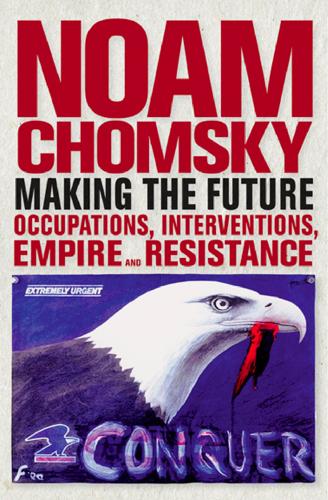
Making the Future: The Unipolar Imperial Moment
by
Noam Chomsky
Published 15 Mar 2010
And the West didn’t want Gadhafi to enhance his power and independence by crushing the rebellion. The United States joined in the U.N. Security Council authorization of a “no-fly zone” and measures to protect civilians, to be implemented primarily by France, the United Kingdom and the United States, the three traditional imperial powers (though we may recall—Libyans presumably do—that after World War I, Italy conducted virtual genocide in eastern Libya). The no-fly zone prevented a likely massacre, but the U.N. resolution was immediately rejected in practice by the triumvirate and interpreted as authorizing direct participation in support for the rebels.
…
Bush’s 2008 visit to, 83, 85, 126 settlement expansion in, 152, 201–206, 244 jihadi movement, 293–294 John XXIII (Pope), 179 Johnson, Simon, 238 Jones, Clayton, 233 Jones, James, 142 JoongAng Daily, 298 Jordan, 255 Joya, Malalai, 174–175 Kandahar, Afghanistan, 223 Kaplan, Lawrence, 78 Karzai, Hamid, 37, 120–121, 143, 144 Kattan, Victor, 282 Kayani, Parvez, 119 Kennan, George, 49 Kennedy, John F., 58 Kepel, Gilles, 294 Kerry, John, 153, 204 Kessler, Glenn, 244 Keynes, John Maynard, 107 Kfoury, Assaf, 155 Khouri, Rami, 34 King, Stephen, 233 Kohl, Helmut, 180 Kosovo, 248 Kramer, Andrew E,, 87 Krepon, Michael, 93 Krugman, Paul, 146 Kull, Steven, 286 Kung, Hans, 179 Kurtzer, Daniel C., 126 Kuwait, 266 labor, 269–273 Labor Day, 270 labor movements and democracy, 259–263 Laroche, Eric, 46, 47 Latin America, 135–139, 167–170, 183–187 Latin American Commission on Drugs and Democracy, 169 Law Day, 270 Lebanon, 127, 155–157 Lee, Ching Kwan, 208–209 liberation theology, 179, 180 Libya, 265–268 Lieberman, Avigdor, 44 Lieven, Anatol, 278, 291–293 Lippmann, Walter, 57 Llorens, Hugo, 185, 256 Louis, George, 79 Loyalty Day, 270 Madison, Wisconsin, 259 Maguire, Mairead, 158 Mahalla, Egypt, 259–260 al-Maliki, Nouri, 88, 90 Mandela, Nelson, 249 Maoz, Zeev, 76, 94 Margolis, Eric S., 293 Marja, Afghanistan, 222 Marx, Karl, 14, 305 Massachusetts, 192, 269–270 Massachusetts Bay Colony, 147 Matlock, Jack, 102, 103 Matta, Nada, 259–260 May Day, 269 Maynes, Charles William, 47 Mayr, Ernst, 81 McCain, John, 65, 112 McChrystal, Stanley A., 221 McCoy, Alfred, 147 McGlynn, John, 80 McGwire, Michael, 103 McKinney, Cynthia, 158 Merkel, Angela, 177 Meron, Theodor, 243 Merrill, John, 297 Meshal, Khaled, 42–43 Mexico, 21–24 Miliband, David, 99–100 military bases, 167–170 military coups, 22, 159, 185–187 military spending, 196 Mill, John Stuart, 148 Milne, Seamus, 88 missile defense system, 39–40, 78–79 Mitchell, George, 131, 134, 203 Mogadishu, 46–47 Mohamed El-Baradei, 26 Monitor Group, 265 Morales, Evo, 137, 167, 169 Morocco, 268 Morris, Benny, 94, 96–97 Mottaki, Manouchehr, 26 Muasher, Marwan, 254, 256 Mubarak, Hosni, 253–254, 259–260, 262 Mullen, Michael, 216 Munck, Ronaldo, 269 My Lai massacre, 148 The Myth of American Exceptionalism (Hodgson), 146 NAFTA (North American Free Trade Agreement), 23 National Democratic Institute (NDI), 186 National Intelligence Estimate, 68 National Liberation Front (NLF), 222 National Peace Jirga, 121 National Security Council, 138, 167 NATO (North Atlantic Treaty Organization), 77–78, 102–103, 118, 142, 164–165, 228 NDI (National Democratic Institute), 186 Netanyahu, Benjamin, 127, 201–203, 204 New York Times, 185, 287 Nicaragua, 184–185 Nicholson, Larry, 222 Niebuhr, Reinhold, 224 NLF (National Liberation Front), 222 Nobel Peace Prize, 171, 174 no-fly zone, 267 Non-Aligned Movement, 219 Non-Proliferation Treaty (NPT), 19, 93–94, 172, 218 Conference (May 2010), 219 Iran and, 67, 76 North American Free Trade Agreement (NAFTA), 23 North Atlantic Treaty Organization. see NATO (North Atlantic Treaty Organization) North Korea, 17–21 Nuclear Non-Proliferation Treaty (NPT). see Non-Proliferation Treaty (NPT) nuclear proliferation, 27, 37–40, 89–90 nuclear weapons, 73–75, 304 in Iran, 171 Iran and, 27–28, 95–98, 171, 173–174 Israel and, 94 nuclear-weapons-free zones (NWFZs), 75–76, 96, 103 Nuremberg Tribunal, 52, 64–65 Obama, Barack administration of, 115, 241 Afghanistan and, 102, 120–123 cycle of violence and, 117–123 economy and, 111 financial institutions and, 196–198 Hamas and, 69–70, 133–134 health care system and, 116 Honduras coup (2009) and, 159, 185–187 Iran and, 66–68, 215–219 Iraq and, 117–118 Israel-Palestine conflict and, 69–70, 125–129, 131–132, 151–153 meetings with Netanyahu and, 202 Middle East and, 117 nuclear weapons and, 95–96 Pakistan and, 119–120, 170, 278 peace efforts of, 171–175 rejectionism, U.
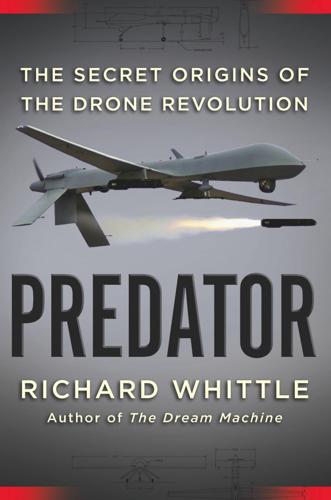
Predator: The Secret Origins of the Drone Revolution
by
Richard Whittle
Published 15 Sep 2014
Perhaps the most exciting initiative after all those undertaken for the CIA was an experiment in which Big Safari put Stinger antiaircraft missiles, which are normally shoulder-fired, on a Predator in late 2002. The modification was an attempt to stop supersonic Iraqi MiG fighters that were hunting the drones as they flew surveillance of no-fly zones over Iraq. After several inconclusive engagements with Iraqi fighter planes over the no-fly zones, an Air Combat Command crew, with Swanson instructing them, lost in an exchange of missiles with an Iraqi MiG-25 Foxbat on December 23, 2002, the Predator’s last air-to-air engagement. Two years after that, Swanson left Big Safari for another green door assignment, and in 2007 he retired from the Air Force.
…
In league with ethnic Serb insurgents eager to carve their own republic out of Bosnian territory, Serbia’s military laid siege to Bosnia’s capital in 1992; by early 1993 they had been shelling Sarajevo’s citizenry with all manner of weaponry for months. The siege led the United Nations to send peacekeeping troops to the Sarajevo airport, declare a “no-fly zone” over Bosnia, and begin airlifting aid to the beleaguered population. Undeterred, the Serbs began firing on UN troops as well. Clinton wanted to break the Serb blockade, and he was both shocked and chagrined to find out how little his military and intelligence agencies could tell him about what was actually happening on the ground around Sarajevo.
…
He quickly won approval to operate it over Bosnia, the former Yugoslav republic whose ethnic war had been a catalyst for developing the drone in the first place. Things were reaching a boiling point in the Balkans, where UN peacekeeping troops had been deployed since 1992. NATO warplanes had been enforcing a no-fly zone over Bosnia since 1993, and tensions had escalated considerably over the following two years. When Rutherford came calling, commanders in Germany were happy to try tracking Serb weapons and activities with an unmanned drone. They were happier still to have the unmanned Predator after June 2, when a Serb missile shot down U.S.

Days of Fire: Bush and Cheney in the White House
by
Peter Baker
Published 21 Oct 2013
American and British warplanes were bombing radar and command-and-control facilities around Baghdad in response to what the military considered an escalated threat to aircraft patrolling no-fly zones. Bush was stunned. How had this happened without his knowing in advance? Heading to a news conference with Fox, Bush knew the questions would now be about Iraq. Aides advised him not to let on that he did not know about it and to use the word “routine” to describe it. Bush followed the advice, informing the world that “a routine mission was conducted to enforce the no-fly zone.” From there, the president flew to his Texas ranch. On television were scenes of bombing in Baghdad. “I’m going to call Dick,” the restless president said.
…
It could give Ariel Sharon, the Israeli prime minister, a green light to send the Israeli army into Palestinian territories and escalate the situation. Cheney countered that Bush was right and should not waste his time. The conversation turned to Iraq, where a decade after the end of the Gulf War, American forces still enforced two no-fly zones and the United Nations program of sanctions had been terribly corrupted. As Rice put it later, “Almost from the very beginning, Iraq was a preoccupation of the national security team.” Official U.S. policy, set by Congress and signed by Clinton, called for regime change, but there was no obvious route to achieve that, and no one at this point was advocating war.
…
“Give the man a break, Mother,” said Euan, the Blairs’ son. BACK IN WASHINGTON, Rumsfeld was trying to force a broader reassessment of Iraq policy. In a four-page memo marked “Secret” that he sent to Cheney, Rice, and Powell on the afternoon of July 27, the defense chief proposed meeting to discuss three options: give up the no-fly zones and sanctions since they were no longer effective; approach “our moderate Arab friends” to explore “a more robust policy” aimed at toppling Saddam Hussein; or open a dialogue with Hussein to see if he was ready “to make some accommodation.” Rumsfeld painted a picture of gathering danger. “Within a few years the U.S. will undoubtedly have to confront a Saddam armed with nuclear weapons,” he wrote.

Waco Rising: David Koresh, the FBI, and the Birth of America's Modern Militias
by
Kevin Cook
Published 30 Jan 2023
His reference to a bird came from the book of Isaiah, a chapter predicting a cataclysm: “Calling a ravenous bird from the east … I bring near my righteousness; it shall not be far off, and my salvation shall not tarry.” * * * Within hours the Federal Aviation Administration declared the area around Mount Carmel a no-fly zone. All civilian aircraft, including TV helicopters, were banned from the area. ATF agents kept TV, radio, and newspaper reporters hundreds of yards from the scene. Koresh and Martin stayed in touch with Lynch and the raiders by phone. They worked out an agreement: if radio station KRLD broadcast a message from Koresh, he would send out some of the children the ATF was calling his “hostages.”
…
Doyle and Thibodeau recalled Perry Jones’s wounding and Neal Vaega’s shooting Jones and Peter Hipsman. Davidian survivors recalled Annetta Richards’s dressing Koresh’s wounds. Tabor and Gallagher recounted Koresh’s conversation with KRLD’s Charlie Serafin in Why Waco? The Tribune-Herald and other sources reported the FAA’s no-fly zone over Mount Carmel. The Department of Justice’s 1993 report detailed the February 28 release of Angelica and Crystal Sonobe and Renae and Nahara Fagan. The Houston Chronicle reported Vic Feazell’s comments (“The feds are preparing to kill them…”) on March 2, 1993. 10. DAVID AND GOLIATH The New York Times quoted an ATF agent at Mount Carmel (“Inexcusable…”) and noted ATF agent Cavanaugh’s role in the February 28 raid on March 28, 1993.
…
burials during siege at child abuse charges and children released by children released by, at Methodist Home children’s deaths at conspiracy theories and cult accusations and curiosity seekers and daily life at Danforth inquiry into deaths at, during raids DeGuerin as defense lawyer and diagram of drug charges vs. early history and founding by Houteffs FAA declares no-fly zone over FBI negotiations and siege at FBI raid and fire of April 19, at finances and fire safety problems and George Roden battles vs. mother Lois over leadership of guns and Hillary Clinton blamed for inquiries into FBI raid and Jesse Amen arrives at Koresh arrives at, and becomes lover of Lois Roden Koresh battles vs.

Who Will Defend Europe?: An Awakened Russia and a Sleeping Continent
by
Keir Giles
Published 24 Oct 2024
“Defence Expenditure of NATO Countries (2014-2024)”, NATO, 17 June 2024, https://www.nato.int/cps/en/natohq/news_226465.htm 93.Murray Brewster, “Canada confirms plan to replace submarine fleet at NATO summit”, CBC News, 10 July 2024, https://www.cbc.ca/news/politics/submarine-blair-trudeau-nato-1.7259718 94.Patrick Swadden, “What Honda’s historic $15B investment means for Alliston, Ont.”, CBC News, 27 April 2024, https://www.cbc.ca/news/canada/toronto/alliston-ontario-honda-investment-local-1.7186794 95.Joe Varner, “Canada’s selfish disregard of defence is the Achilles heel of NATO’s northern security”, The Hub, 14 June 2024, https://thehub.ca/2024/06/14/joe-varner-canadas-selfish-disregard-of-defence-is-the-achilles-heel-of-natos-northern-security/ 96.I discussed Russian campaigns against Ireland at length in Russia’s War on Everybody. 97.Conor Gallagher, “Ireland ‘scrutinising’ Russian diplomats’ visa applications amid spying concerns”, The Irish Times, 17 February 2024, https://www.irishtimes.com/politics/2024/02/17/ireland-scrutinising-every-new-application-from-russian-diplomats-coming-here-amid-concerns-about-espionage/ 98.Brian Mahon, “Only Russian ‘good will’ can keep Irish no-fly zone intact”, The Times, 28 February 2022, https://www.thetimes.co.uk/article/only-russian-good-will-can-keep-irish-no-fly-zone-intact-0cg6jq23d 99.Tom Sharpe, “Putin’s subs have exposed Ireland’s shameless hypocrisy”, The Telegraph, 4 June 2024, https://www.telegraph.co.uk/news/2024/06/04/nato-sea-power-cui-russian-submarines-ireland-eu/ 100.Nick Childs, “Gauging the Gap: The Greenland–Iceland–United Kingdom Gap – A Strategic Assessment”, IISS, 3 May 2022, https://www.iiss.org/research-paper/2022/05/gauging-the-gap-the-greenland-iceland-united-kingdom-gap-a-strategic-assessment/ 101.As for instance “Vinner Putin väntar en större konflikt” (If Putin wins, expect a bigger conflict), Svenska Dagbladet, 19 March 2024, https://www.svd.se/a/76XxQ3/debattorer-vinner-putin-vantar-en-storre-konflikt 102.EPP Group on Twitter, 9 November 2023, https://twitter.com/EPPGroup/status/1722562675698438368 103.Sylvia Kauffmann, “Les aveuglés”, Stock, October 2023. 104.Glenn Hubbard, “NATO Needs More Guns and Less Butter”, The Wall Street Journal, March 7 2022, https://www.wsj.com/articles/nato-needs-more-guns-and-less-butter-russia-ukriane-defense-spending-security-investments-11646688247 105.Elena Sánchez Nicolás, “Kallas: Russia’s defeat crucial to avoid Third World War”, EUObserver, 21 March 2024, https://euobserver.com/world/158259 106.Alex Vershinin, “The Attritional Art of War: Lessons from the Russian War on Ukraine”, RUSI, 18 March 2024, https://rusi.org/explore-our-research/publications/commentary/attritional-art-war-lessons-russian-war-ukraine 6.READINESS AND RESILIENCE 1.Helsinki Security Forum, 29 September 2023, https://www.youtube.com/watch?
…
As the crisis unfolded, the US and UK almost immediately ruled out direct military support on the ground to Kyiv. Moscow will have been delighted, as once again the West helpfully took Russia’s greatest fears off the table. But even after the US and UK had ruled out direct defensive support to Ukraine, it would have been possible to put in place no-fly zones or maritime exclusion zones, presenting Russia with the risk of direct clashes with NATO nations if it supported an attack by use of air or sea. This didn’t happen either. The extent of support to Ukraine was supposedly limited by the fact that it is not a member of NATO, but there’s no shortage of examples where Western powers have offered protection from aggression beyond the borders of the alliance – and as we’ll see in Chapter 3, there have been more such cases since 2022.
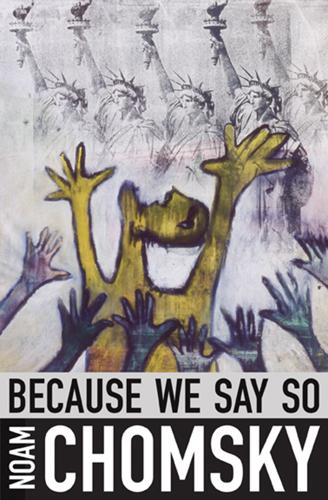
Because We Say So
by
Noam Chomsky
Security Council the African position on the attack—in reality, bombing by their traditional imperial aggressors: France and Britain, joined by the United States, which initially coordinated the assault, and marginally some other nations. It should be recalled that there were two interventions. The first, under U.N. Security Council Resolution 1973, adopted on March 17, 2011, called for a no-fly zone, a cease-fire and measures to protect civilians. After a few moments, that intervention was cast aside as the imperial triumvirate joined the rebel army, serving as its air force. At the outset of the bombing, the African Union called for efforts at diplomacy and negotiations to try to head off a likely humanitarian catastrophe in Libya.
…
That comes as no surprise: Africans are “unpeople,” to adapt George Orwell’s term for those unfit to enter history. On March 12, the Arab League gained the status of people by supporting U.N. Resolution 1973. But approval soon faded when the League withheld support for the subsequent Western bombardment of Libya. And on April 10, the Arab League reverted to unpeople by calling on the U.N. also to impose a no-fly zone over Gaza and to lift the Israeli siege, virtually ignored. That too makes good sense. Palestinians are prototypical unpeople, as we see regularly. Consider the November/December issue of FOREIGN AFFAIRS, which opened with two articles on the Israel-Palestine conflict. One, written by Israeli officials Yosef Kuperwasser and Shalom Lipner, blamed the continuing conflict on the Palestinians for refusing to recognize Israel as a Jewish state (keeping to the diplomatic norm: States are recognized, but not privileged sectors within them).
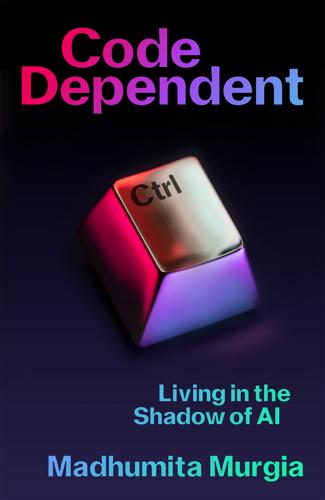
Code Dependent: Living in the Shadow of AI
by
Madhumita Murgia
Published 20 Mar 2024
In Brazil, workers have formed Entregadores Anti-fascistas, the Anti-Fascist Couriers; in Mexico, Ni un Repartidor Menos, Not one Delivery Worker Killed; in South Africa, workers can join The Movement; and in Nigeria, the National Union of Professional App-Based Transport Workers has 10,000 members from Uber and Bolt. In China, where independent labour unions are illegal, workers are banding together informally, organizing via large WeChat groups such as Knights League, on which they also share tips such as difficult delivery areas or ‘no-fly’ zones.26 The one thing that draws them all together is their collective rejection of the tyranny of AI-controlled work. Protests against Uber in Nairobi and Meituan in Shenzhen were both ignited by arbitrary changes in how wages were calculated by app software.27 Farrar said, ‘This is the whole “hiddenness” of algorithmic management – what are the rules?
…
.: ‘The Machine Stops’ ref1 Fortnite ref1 Foxglove ref1 Framestore ref1 Francis, Pope ref1, ref2 fraudulent activity benefits ref1 gig workers and ref1, ref2, ref3 free will ref1, ref2 Freedom of Information requests ref1, ref2, ref3 ‘Fuck the algorithm’ ref1 Fussey, Pete ref1 Galeano, Eduardo ref1 gang rape ref1, ref2 gang violence ref1, ref2, ref3, ref4 Gebru, Timnit ref1, ref2, ref3 Generative Adversarial Networks (GANs) ref1 generative AI ref1, ref2, ref3, ref4, ref5, ref6, ref7, ref8, ref9, ref10 AI alignment and ref1, ref2, ref3 ChatGPT see ChatGPT creativity and ref1, ref2, ref3, ref4 deepfakes and ref1, ref2, ref3 GPT (Generative Pre-trained Transformer) ref1, ref2, ref3, ref4 job losses and ref1 ‘The Machine Stops’ and ref1 Georgetown University ref1 gig work ref1, ref2, ref3, ref4, ref5 Amsterdam court Uber ruling ref1 autonomy and ref1 collective bargaining and ref1 colonialism and ref1, ref2, ref3 #DeclineNow’ hashtag ref1 driver profiles ref1 facial recognition technologies ref1, ref2, ref3, ref4 fraudulent activity and ref1, ref2, ref3, ref4 ‘going Karura’ ref1 ‘hiddenness’ of algorithmic management and ref1 job allocation algorithm ref1, ref2, ref3, ref4, ref5, ref6 location-checking ref1 migrants and ref1 ‘no-fly’ zones ref1 race and ref1 resistance movement ref1 ‘slaveroo’ ref1 ‘therapy services’ ref1 UberCheats ref1, ref2, ref3 UberEats ref1, ref2 UK Supreme Court ruling ref1 unions and ref1, ref2, ref3 vocabulary to describe AI-driven work ref1 wages ref1, ref2, ref3, ref4, ref5, ref6, ref7, ref8, ref9, ref10, ref11 work systems built to keep drivers apart or turn workers’ lives into games ref1, ref2 Gil, Dario ref1 GitHub ref1 ‘give work, not aid’ ref1 Glastonbury Festival ref1 Glovo ref1 Gojek ref1 ‘going Karura’ ref1 Goldberg, Carrie ref1 golem (inanimate humanoid) ref1 Gonzalez, Wendy ref1 Google ref1 advertising and ref1 AI alignment and ref1 AI diagnostics and ref1, ref2, ref3 Chrome ref1 deepfakes and ref1, ref2, ref3, ref4 DeepMind ref1, ref2, ref3, ref4 driverless cars and ref1 Imagen AI models ref1 Maps ref1, ref2, ref3 Reverse Image ref1 Sama ref1 Search ref1, ref2, ref3, ref4, ref5 Transformer model and ref1 Translate ref1, ref2, ref3, ref4 Gordon’s Wine Bar London ref1 GPT (Generative Pre-trained Transformer) ref1, ref2, ref3, ref4 GPT-4 ref1 Graeber, David ref1 Granary Square, London ref1, ref2 ‘graveyard of pilots’ ref1 Greater Manchester Coalition of Disabled People ref1 Groenendaal, Eline ref1 Guantanamo Bay, political prisoners in ref1 Guardian ref1 Gucci ref1 guiding questions checklist ref1 Gulu ref1 Gumnishka, Iva ref1, ref2, ref3, ref4 Gutiarraz, Norma ref1, ref2, ref3, ref4, ref5 hallucination problem ref1, ref2, ref3 Halsema, Femke ref1, ref2 Hanks, Tom ref1, ref2 Hart, Anna ref1 Hassabis, Demis ref1 Harvey, Adam ref1 Have I Been Trained ref1 healthcare/diagnostics Accredited Social Health Activists (ASHAs) ref1, ref2, ref3 bias in ref1 Covid-19 and ref1, ref2 digital colonialism and ref1 ‘graveyard of pilots’ ref1 heart attacks and ref1, ref2 India and ref1 malaria and ref1 Optum ref1 pain, African Americans and ref1 qTrack ref1, ref2, ref3 Qure.ai ref1, ref2, ref3, ref4 qXR ref1 radiologists ref1, ref2, ref3, ref4, ref5, ref6 Tezpur ref1 tuberculosis ref1, ref2, ref3 without trained doctors ref1 X-ray screening and ref1, ref2, ref3, ref4, ref5, ref6, ref7, ref8, ref9, ref10 heart attacks ref1, ref2 Herndon, Holly ref1 Het Parool ref1, ref2 ‘hiddenness’ of algorithmic management ref1 Hikvision ref1, ref2 Hinton, Geoffrey ref1 Hive Micro ref1 Home Office ref1, ref2, ref3 Hong Kong ref1, ref2, ref3, ref4, ref5 Horizon Worlds ref1 Hornig, Jess ref1 Horus Foundation ref1 Huawei ref1, ref2, ref3 Hui Muslims ref1 Human Rights Watch ref1, ref2, ref3, ref4 ‘humanist’ AI ethics ref1 Humans in the Loop ref1, ref2, ref3, ref4 Hyderabad, India ref1 IBM ref1, ref2, ref3, ref4 Iftimie, Alexandru ref1, ref2, ref3, ref4, ref5 IJburg, Amsterdam ref1 Imagen AI models ref1 iMerit ref1 India ref1, ref2, ref3, ref4, ref5, ref6, ref7, ref8, ref9 facial recognition in ref1, ref2, ref3 healthcare in ref1, ref2, ref3 Industrial Light and Magic ref1 Information Commissioner’s Office ref1 Instacart ref1, ref2 Instagram ref1, ref2 Clearview AI and ref1 content moderators ref1, ref2, ref3, ref4 deepfakes and ref1, ref2, ref3 Integrated Joint Operations Platform (IJOP) ref1, ref2 iPhone ref1 IRA ref1 Iradi, Carina ref1 Iranian coup (1953) ref1 Islam ref1, ref2, ref3, ref4, ref5 Israel ref1, ref2, ref3 Italian government ref1 Jaber, Faisal bin Ali ref1 Jainabai ref1 Janah, Leila ref1, ref2, ref3 Jay Gould, Stephen ref1 Jewish faith ref1, ref2, ref3, ref4 Jiang, Mr ref1 Jim Crow era ref1 jobs application ref1, ref2, ref3 ‘bullshit jobs’ ref1 data annotation and data-labelling ref1 gig work allocation ref1, ref2, ref3, ref4, ref5, ref6 losses ref1, ref2, ref3 Johannesburg ref1, ref2 Johnny Depp–Amber Heard trial (2022) ref1 Jones, Llion ref1 Joske, Alex ref1 Julian-Borchak Williams, Robert ref1 Juncosa, Maripi ref1 Kafka, Franz ref1, ref2, ref3, ref4 Kaiser, Lukasz ref1 Kampala, Uganda ref1, ref2, ref3 Kellgren & Lawrence classification system. ref1 Kelly, John ref1 Kibera, Nairobi ref1 Kinzer, Stephen: All the Shah’s Men ref1 Knights League ref1 Koli, Ian ref1, ref2, ref3, ref4, ref5, ref6, ref7, ref8, ref9, ref10 Kolkata, India ref1 Koning, Anouk de ref1 Laan, Eberhard van der ref1 labour unions ref1, ref2, ref3, ref4, ref5, ref6 La Fors, Karolina ref1 LAION-5B ref1 Lanata, Jorge ref1 Lapetus Solutions ref1 large language model (LLM) ref1, ref2, ref3 Lawrence, John ref1 Leigh, Manchester ref1 Lensa ref1 Leon ref1 life expectancy ref1 Limited Liability Corporations ref1 LinkedIn ref1 liver transplant ref1 Loew, Rabbi ref1 London delivery apps in ref1, ref2 facial recognition in ref1, ref2, ref3, ref4 riots (2011) ref1 Underground terrorist attacks (2001) and (2005) ref1 Louis Vuitton ref1 Lyft ref1, ref2 McGlynn, Clare ref1, ref2 machine learning advertising and ref1 data annotation and ref1 data colonialism and ref1 gig workers and ref1, ref2, ref3 healthcare and ref1, ref2, ref3 predictive policing and. ref1, ref2, ref3, ref4 rise of ref1 teenage pregnancy and ref1, ref2, ref3 Mahmoud, Ala Shaker ref1 Majeed, Amara ref1, ref2 malaria ref1 Manchester Metropolitan University ref1 marginalized people ref1, ref2, ref3, ref4, ref5, ref6, ref7, ref8, ref9 Martin, Noelle ref1, ref2, ref3, ref4, ref5, ref6, ref7 Masood, S.
…
Q. ref1 Massachusetts Institute of Technology ref1 Material Bank ref1 Mbembe, Achille ref1, ref2 Meareg, Abraham ref1 Megvii ref1 Meituan ref1, ref2 Mejias, Ulises: The Costs of Connection ref1, ref2 Mercado Libre ref1 Merck ref1 Meredith, Sarah ref1 Meta ref1 advertising and ref1 communal violence and ref1 content moderators ref1, ref2 databases of faces and ref1 ethics policy ref1 metaverse and ref1 Sama and ref1, ref2, ref3, ref4, ref5 violence-inciting content ref1 see also Facebook Metiabruz ref1 Metropolitan Police ref1, ref2, ref3, ref4 Mexico ref1, ref2, ref3, ref4, ref5 Miceli, Milagros ref1, ref2, ref3, ref4 Microsoft Azure software ref1, ref2 Bing ref1 Bletchley Park summit (2023) and ref1 ethical AI charter ref1 face recognition systems and ref1, ref2 gig workers and ref1 Microsoft-Salta predictive system/public policy design and ref1, ref2 OpenAI and ref1 Rome Call and ref1, ref2, ref3 Midjourney ref1, ref2 Mighty AI ref1 migration ref1, ref2, ref3, ref4, ref5, ref6, ref7, ref8, ref9, ref10, ref11, ref12, ref13, ref14 Ministry of Early Childhood, Argentina ref1 Mort, Helen ref1, ref2, ref3, ref4, ref5, ref6, ref7, ref8, ref9 A Line Above the Sky ref1 ‘Deepfake: A Pornographic Ekphrastic’ ref1 ‘This Is Wild’ ref1, ref2 Mosul, Iraq ref1 Motaung, Daniel ref1, ref2, ref3, ref4, ref5 Mothers (short film) ref1 ‘move fast and break things’ ref1 Movement, The ref1 Mozur, Paul ref1 M-PESA ref1, ref2 MRIs ref1 Mukasa, Dorothy ref1 multi-problem families ref1 Mumbai, India ref1, ref2, ref3, ref4 Murati, Mira ref1 Museveni, Yoweri ref1 Musk, Elon ref1, ref2 Muslims ref1, ref2, ref3, ref4, ref5, ref6, ref7, ref8, ref9, ref10, ref11, ref12, ref13 Mutsaers, Paul ref1 Mutemi, Mercy ref1, ref2 My Image My Choice ref1 Nairobi, Kenya ref1, ref2 facial recognition in ref1 gig workers in ref1, ref2, ref3, ref4 Sama in ref1, ref2, ref3, ref4, ref5 Nandurbar, Western India ref1, ref2, ref3 National Health Service ref1, ref2 National Union of Professional App-Based Transport Workers ref1 National University of Defense Technology, China ref1 Navajo Nation ref1, ref2 NEC ref1 necropolitics ref1 Neruda, Pablo ref1 Netflix ref1 New Delhi, India ref1, ref2, ref3 New York Fashion Week ref1 New York Times ref1, ref2, ref3 Neymar ref1 Ngito, Benjamin ref1 Ni un Repartidor Menos (Not one Delivery Worker Killed) ref1 9/11 ref1, ref2 ‘no-fly’ zones ref1 Noble, Safiya Umoja ref1 non-disclosure agreements (NDAs) ref1, ref2, ref3, ref4 Northpointe ref1 Not Your Porn ref1 Notting Hill carnival ref1 NTech Labs ref1 Obama, Barack ref1 Obermeyer, Ziad ref1 Oculus Quest 2 virtual reality headset ref1 Ofqual ref1 Ola Cabs ref1, ref2 Olympics (2012) ref1, ref2 One Card System ref1 Online Safety Bill, UK ref1 OpenAI AI alignment and ref1 Bletchley Park summit and ref1 ChatGPT and ref1, ref2, ref3, ref4, ref5 creativity and ref1, ref2 Rome Call and ref1 Sama and ref1, ref2 Operation Condor ref1 Optum ref1 organ-allocation algorithm ref1 Orwell, George ref1, ref2 osteoarthritis ref1 outsourcing ref1, ref2, ref3, ref4, ref5, ref6, ref7, ref8, ref9, ref10, ref11 Ovcha Kupel refugee camp ref1 Oxford Internet Institute ref1 pain, African Americans and ref1 Palestine ref1 Parkinson’s disease ref1 Parks, Nijer ref1, ref2 Parvati (tuberculosis patient) ref1, ref2, ref3, ref4 Peled, Nirit ref1 Pena, Paz ref1, ref2 Perth, Western Australia ref1, ref2, ref3, ref4, ref5, ref6, ref7 Photoshop ref1, ref2, ref3 physiognomy ref1 Pi ref1 pilot programmes abandonment of ref1, ref2 ‘graveyard of pilots’ ref1 public disclosure of ref1 replacement of with human solution ref1 PimEyes ref1 policing CCTV cameras and see CCTV Crime Anticipation System ref1 De Moeder Is de Sleutel (The Mother Is the Key) ref1 diffuse policing ref1 facial recognition and see facial recognition forgiveness and ref1 predictive policing algorithms ref1 ProKid ref1, ref2, ref3 Right To Be Forgotten and ref1 Polosukhin, Illia ref1, ref2 Pontifical Academy of Sciences ref1 Pontifical Gregorian University ref1 pornography deepfake see deepfakes revenge porn ref1, ref2, ref3, ref4, ref5 Portal De La Memoria ref1 Posada, Julian ref1 pregnancy, teenage ref1 abandonment of AI pilot in Argentina ref1 abortion and ref1, ref2, ref3, ref4, ref5, ref6, ref7 digital welfare state and ref1 Microsoft Azure software and ref1 public disclosure of AI pilot in Argentina ref1 replacement of AI pilot with human solution in Argentina ref1 Princeton ref1 ProKid ref1, ref2, ref3 ProPublica ref1, ref2 proxy agents ref1, ref2 PTSD (post-traumatic stress disorder) ref1, ref2 public disclosure ref1, ref2 public-private surveillance state ref1 pulse oximeter ref1 Puma ref1 Puna Salteña, Andes ref1 qTrack ref1, ref2, ref3 Qure.ai ref1, ref2, ref3, ref4 qXR ref1 race facial recognition and ref1, ref2, ref3, ref4, ref5 medical treatment and ref1, ref2, ref3 predictive policing and ref1, ref2, ref3, ref4, ref5 radiologists ref1, ref2, ref3, ref4, ref5, ref6 Raji, Deborah ref1, ref2 Rappi ref1 recruitment systems ref1 Red Caps ref1 red-teamers ref1 Reddit ref1, ref2, ref3 regulation ref1 benefits fraud ref1 content moderators ref1 deepfakes ref1, ref2, ref3, ref4, ref5, ref6, ref7, ref8, ref9, ref10 exam grades ref1 facial recognition ref1, ref2, ref3, ref4 Foxglove and see Foxglove hateful content ref1 military weapons ref1, ref2, ref3, ref4 non-disclosure agreements (NDAs) ref1, ref2, ref3, ref4 organ-allocation algorithm ref1 political prisoners in Guantanamo Bay ref1 Right To Be Forgotten ref1 visa-awarding algorithms ref1 Reprieve ref1, ref2 responsible innovation ref1 Rest of the World ref1 retinopathy ref1 revenge porn ref1, ref2, ref3, ref4, ref5 Ricanek, Karl ref1, ref2 Ricaurte, Paola ref1, ref2 Right To Be Forgotten ref1 Roblox ref1 Roderick, Emily ref1 Rome Call ref1 Roose, Kevin ref1 Rosen, Rabbi David ref1, ref2 Russell, Stuart ref1 Salta, Argentina ref1, ref2 Sama ref1, ref2, ref3, ref4, ref5, ref6, ref7 Samii, Armin ref1, ref2, ref3, ref4, ref5 Sana’a, Yemen ref1 SAP ref1, ref2, ref3 Sardjoe, Damien ref1, ref2 Sardjoe, Diana ref1, ref2, ref3, ref4, ref5, ref6, ref7, ref8, ref9 Sardjoe, Nafayo ref1, ref2, ref3 Scale AI ref1 Scarlett, Cher ref1 Scarlet Letter, The ref1 Schwartz, Steven ref1 Scsky ref1 Secretariat for Early Childhood and Families ref1 self-attention ref1 SenseTime ref1 Sensity AI ref1, ref2, ref3 Sequoia Capital ref1 sexual assault ref1, ref2, ref3 Shelley, Mary: Frankenstein ref1 Silver Lake ref1 Singh, Dr Ashita ref1, ref2, ref3, ref4 Singh, Dr Deepak ref1 ‘slaveroo’ ref1 Slyck, Milo Van ref1 Smith, Brad ref1, ref2, ref3, ref4, ref5 Snow, Olivia ref1 social media ref1, ref2, ref3, ref4 content moderators ref1, ref2, ref3, ref4, ref5, ref6 deepfakes and ref1, ref2, ref3, ref4, ref5, ref6 electoral manipulation and ref1, ref2 SoftBank ref1 South Wales Police ref1 Sri Lanka: Easter Day bombings (2019) ref1 Stability AI ref1 Stable Diffusion ref1 Stratford, London ref1, ref2, ref3 Suleyman, Mustafa ref1 super-recognizers, Metropolitan Police ref1 Supreme Court, UK ref1 surveillance capitalism ref1, ref2 Syria ref1, ref2, ref3, ref4 targeting algorithms ref1, ref2, ref3, ref4 Taylor, Breonna ref1 Tekle, Fisseha ref1 Telegram ref1, ref2 Tesla ref1, ref2, ref3, ref4 Tezpur ref1 Thiel, Peter ref1 Thuo, David Mwangi ref1 Tiananmen Square massacre (1989) ref1, ref2, ref3, ref4 Tibet ref1, ref2 Tiger Global ref1 TikTok ref1, ref2, ref3, ref4, ref5 Top400 ref1, ref2, ref3, ref4, ref5, ref6, ref7 Top600 ref1, ref2, ref3, ref4, ref5, ref6, ref7, ref8, ref9, ref10 transformer ref1, ref2, ref3, ref4 translation ref1, ref2, ref3, ref4, ref5, ref6, ref7 TS-Cop ref1 Tséhootsooí Medical Center, Fort Defiance, Arizona ref1, ref2 tuberculosis ref1, ref2, ref3 Tuohy, Seamus ref1 Uber ref1, ref2, ref3, ref4, ref5, ref6, ref7, ref8 UberEats ref1, ref2 UberCheats ref1, ref2, ref3 Uganda ref1, ref2, ref3, ref4, ref5 Ukraine, war in ref1, ref2, ref3, ref4 UN (United Nations) Declaration of Human Rights ref1 Food and Agriculture Organization ref1 Special Rapporteur on extreme poverty and human rights report on emergence of a digital welfare state (2019) ref1 University of Buenos Aires ref1 University of California Berkeley ref1 Los Angeles ref1 University of Michigan ref1 University of Western Australia ref1, ref2 Urtubey, Juan Manuel ref1, ref2, ref3, ref4 US Department of Defense ref1, ref2 US National Institutes of Health ref1 US Navy ref1 Uszkoreit, Jakob ref1 Valbuena, Tess ref1 Vara, Vauhini ref1 Vaswani, Ashish ref1 Vatican, Rome ref1, ref2, ref3 Vazquez Llorente, Raquel ref1 Venezuela ref1, ref2, ref3 Vice News ref1 virtual private network (VPN) ref1 visa awards ref1 vocabulary, AI-driven work-related ref1 voice-over artists ref1 Wadhwani AI ref1 wages app workers ref1, ref2, ref3, ref4, ref5, ref6, ref7, ref8, ref9, ref10, ref11 data annotation/data-labelling and ref1, ref2, ref3, ref4, ref5, ref6 global wage for AI data workers ref1, ref2 Walmart ref1, ref2 Wang, Maya ref1 Washington Post ref1 Waymo ref1 webcams ref1 WeChat ref1, ref2, ref3 ‘weights’ (strength of connections) ref1 welfare systems ref1, ref2, ref3, ref4 digital welfare state ref1, ref2 White, Andrew ref1 Whittaker, Meredith ref1 Wichi ref1 Wientjes, Jacqueline ref1 Wine, Bobi (Robert Kyagulanyi Ssentamu) ref1, ref2 Wipro ref1 Wired ref1, ref2, ref3, ref4, ref5 WITNESS ref1 Witt, Hays ref1 Woodbridge, New Jersey ref1 Woods, Kat ref1 worker collectives ref1 Worker Info Exchange ref1 World Health Organization ref1 Wright, Robin ref1 Writers Guild of America ref1 Xi Jinping ref1 Xinjiang, China ref1, ref2 X-rays ref1, ref2, ref3, ref4, ref5, ref6, ref7, ref8, ref9, ref10 YouTube ref1, ref2, ref3, ref4 Yu, Amber ref1 Yuan Yang ref1 Zuboff, Shoshana ref1 Zuckerberg, Mark ref1 About the Author MADHUMITA MURGIA is the first Artificial Intelligence Editor of the Financial Times and has been writing about AI, for Wired and the FT, for over a decade.
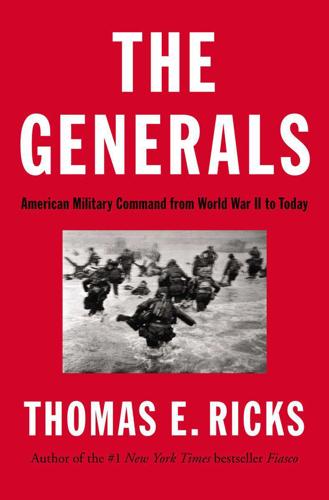
The Generals: American Military Command From World War II to Today
by
Thomas E. Ricks
Published 14 Oct 2012
It was not a full-blown war, but it certainly was not a state of peace. First, in April 1991, not long after Schwarzkopf’s ceremony at Safwan, the United States imposed a no-fly zone, covering all Iraqi aircraft, including helicopters, in the north of Iraq in order to protect Kurds fleeing an Iraqi offensive. Then, to ensure that the refugees did not settle in Turkey, it sent in Army and Marine units to protect them as they returned to Iraq. In August 1992, the United States declared a similar but far larger no-fly zone for southern Iraq. It conducted air strikes in January and June 1993 in response to actions by Saddam Hussein. It deployed troops to Kuwait in 1994 when he appeared to be threatening to invade again.
…
Iraqi leader Saddam Hussein could not understand why he was being given the gift of a ceasefire, which he interpreted as a victory for Iraq. That is, he had been assaulted by the Americans but lived to tell about it. So began two decades of American fighting with Iraq—first, twelve years of patrolling “no-fly zones,” followed by eight years of fighting on the ground. But the ragged outcome of the war was more the fault of American civilian leaders than that of generals. Gen. Tommy R. Franks, who mishandled the wars in Afghanistan and Iraq, is seen by many in the Army as a mistake or aberration, someone promoted well past his level of competence.
…
On the issue of the effects of the 1991 war, one question about which surprisingly little is known even now is whether the way in which the war ended gave Iran entrée into Iraqi affairs, with its Revolutionary Guards also encouraging Iraqi Shiites to rise against Saddam. On the captured tapes of his meetings, Saddam complains that the Iranians “imposed on our land” after the 1991 war, especially in Diyala Province. Woods, Palkki, and Stout, The Saddam Tapes, 206. the United States imposed a no-fly zone: Michael Knights, “The Long View of No-Fly and No-Augmentation Zones,” in Michael Knights, ed., Operation Iraqi Freedom and the New Iraq: Insights and Forecasts (Washington Institute for Near East Policy, 2004), 41. 26. THE POST–GULF WAR MILITARY “above average”: Linn, Echo of Battle, 229. “Basking in the glow of victory”: Maj.
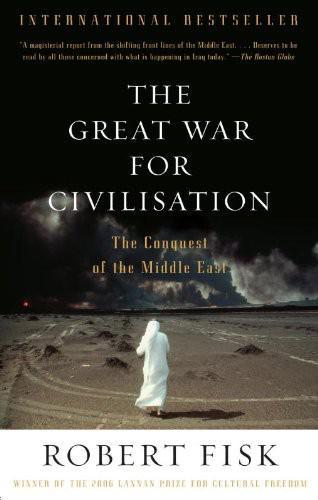
The Great War for Civilisation: The Conquest of the Middle East
by
Robert Fisk
Published 2 Jan 2005
The growing regularity of attacks on Iraq did more than dull the senses of journalists; it gave a continuity to their story, so when the United States and Britain, the sole surviving allies of the 1991 war—the French had wisely pulled out of the “no-fly” zone bombardments—attacked Iraqi “military positions” over the next decade, their actions became routine, part of a pattern, a habit which, as the years went by, ceased to be a “news story” at all. The southern “no-fly” zone was supposed to protect the Shiites from Saddam, even though the Shiite insurgents of 1991 were long in their mass graves or still hiding in their refugee camps over the border in Iran. In the north, the “no-fly” zone was supposed to protect the Kurds from similar aggression; but the “safe haven” created by the allies of 1991 at least still existed there, even if it was not enough to save the Kurds of Irbil when Saddam sent his tanks into the city to break up a CIA-run operation in 1996.
…
Almost two years after they celebrated victory in the 1991 Gulf War, the conflict’s three principal Western allies—the United States, Britain and France— launched a series of air strikes against Iraq’s supposed violation of the southern no-fly zone and its seizure of Silkworm anti-ship missiles from the United Nations. On 12 January 1993, six British Tornado bombers and a squadron of French Mirage jets based in Saudi Arabia joined a much larger force of American planes from the carrier Kitty Hawk in attacking targets inside Iraq, most of them missile sites and radar bases. For more than a week, the United States had protested at Iraq’s positioning of SAM anti-aircraft missile batteries inside the “no-fly” zones. Yet if the Americans needed a regular crisis in the Gulf, Saddam also wanted to provoke tension.
…
House of Representatives proposed an Armenian Genocide Resolution in 2000, asking President Clinton in his annual Armenian commemoration address to refer to the killings as genocide—it had the votes to pass—Turkey warned Washington that it would close its airbases to American aircraft flying over the Iraqi “no-fly” zones. The Turkish defence minister, Sabahattin Çakmakoğlu, said that Turkey was prepared to cancel arms contracts with the United States. The Israeli foreign ministry took Turkey’s side and President Bill Clinton shamefully gave in and asked that the bill be killed in the Senate. It was. All across the United States, this same pressure operates.

Beautiful Visualization
by
Julie Steele
Published 20 Apr 2010
Flight paths over the north Atlantic show some anomalies in the data If you look carefully at the visualization, you will notice some interesting features. One obvious example is the restricted no-fly zones over Nevada (Figure 6-13). It doesn’t appear as if these no-fly zones are completely restricted, though: a tiny number of flights crossing this dark space are just discernable. Figure 6-13. A closeup look at no-fly zones in the southwest United States Every time you work with large, organic datasets, you will find errors and anomalies, and I think it’s important to consider how to handle them.
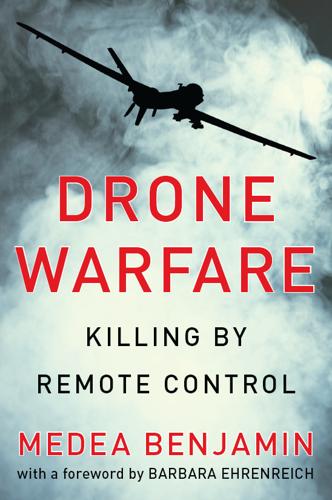
Drone Warfare: Killing by Remote Control
by
Medea Benjamin
Published 8 Apr 2013
With drone warfare, there is no need to unite the country behind a conflict, no need to call for shared sacrifice, no need for grueling debates in Congress. That was certainly the case with President Obama’s decision to get involved militarily in the overthrow of the regime of Libyan leader Muammar Qaddafi. On March 17, 2011 the United Nations Security Council passed Resolution 1973 sanctioning the establishment of a no-fly zone and the use of “all means necessary” to protect civilians within Libya.252 Just weeks later, President Obama approved the use of Predator drones, armed with Hellfire missiles, to pound Qaddafi’s compound and his loyalist troops. Six months later, Qaddafi was captured and killed. While the National Transitional Council nominally took control, warlords, Islamists, tribal leaders and would-be democrats were all vying for power.
…
/CUBA: Justice Not So Blind in Politically Charged Cases,” IPS Inter Press Service, January 29, 2008. 247 “Collateral damage,” Wikipedia. 248 David Rohde, “The Drone War,” Reuters Magazine, January 17, 2012. 249 Washington Post-ABC News Poll, The Washington Post, February 8, 2012. 250 P.W. Singer, “Wired for War,” Wilson Quarterly, Winter 2009. 251 Teri Schultz, “Meet the Pilots who Fly America’s Drones,” GlobalPost, December 16, 2011. 252 “No-fly zone” Wikipedia. 253 Barack Obama, “Letter from the President on the War Powers Resolution,” The White House, June 15, 2011. 254 “United States Activities in Libya,” Foreign Policy Files, June 15, 2011. 255 C. J. Chivers and Eric Schmitt, “Scores of Unintended Casualties in NATO War in Libya,” The New York Times, December 18, 2011. 256 Joshua Foust, “Unaccountable Killing Machines: The True Cost of U.S.
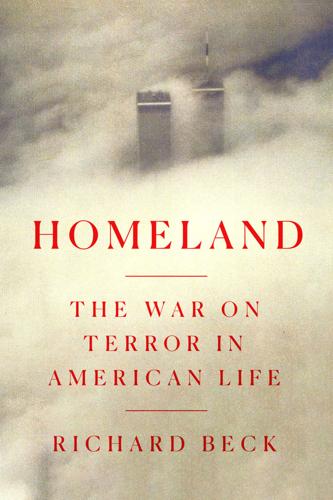
Homeland: The War on Terror in American Life
by
Richard Beck
Published 2 Sep 2024
The United States and its allies were almost certain that a massacre would take place if Gaddafi managed to retake the city, and so on March 19 the UN Security Council voted for military intervention, demanding a ceasefire, imposing a no-fly zone, and authorizing the use of force to protect civilians. As America’s Tomahawk missiles began to fly, Obama and other members of his administration assured the media that regime change was not among their goals. “The task that I assigned our forces [is] to protect the Libyan people from immediate danger and to establish a no-fly zone,” Obama said. “Broadening our military mission to include regime change would be a mistake.” But the hypothetical “mistake” had already been made—it was, in fact, part of the plan.
…
The Federal Emergency Management Agency (FEMA), which became notorious a few years later for leaving thousands of New Orleanians stranded after Hurricane Katrina, oversaw the evacuation plan in case terrorists did manage to strike.[9] The mayor of New Orleans estimated that forty-eight different agencies were involved.[10] If the inside of the Superdome was a football- and America-themed amusement park, the outside was fortified like a military base in enemy territory. The stadium was surrounded with concrete barriers and an eight-foot-tall fence, and National Guard soldiers carrying M-16 rifles patrolled the grounds along with bomb-sniffing dogs. Government agencies imposed a no-fly zone over the entire city, which meant there were no aerial shots of the stadium during the game—the skies were reserved for patrolling fighter jets.[11] The section of Interstate 10 that runs past the stadium was closed to trucks, and streets in the surrounding neighborhood were blocked off by Army vehicles.
…
In a similar way, the security apparatus that protected the big game each year slowly expanded out beyond the turnstiles and parking lot and into the neighborhoods of the country’s cities. It started somewhat modestly. For Super Bowl thirty-six in New Orleans, the government established an eight-mile no-fly zone over New Orleans, shut down a stretch of the interstate that ran by the stadium, and barricaded the streets in the surrounding neighborhoods. This was a major inconvenience to New Orleanians, albeit a temporary one; once the Patriots finished celebrating on Bourbon Street and flew back to Boston for their parade, the skies and the highways reopened.

The New Digital Age: Transforming Nations, Businesses, and Our Lives
by
Eric Schmidt
and
Jared Cohen
Published 22 Apr 2013
It’s hard to say. Perhaps there might emerge international requirements that surveillance drones be easily distinguishable from bomber drones. Some states might join together in a sort of “drone shield,” not unlike the nuclear alliance of the Cold War, in which case we would see the world’s first drone-based no-fly zone. If a small and poor country cannot afford to build or buy its own bomber drones, yet it fears aerial attacks from an aggressive neighbor, it might seek an alliance with a superpower to guarantee some measure of protection. It seems unlikely, however, that states without drones will remain bereft for long: The Sentinel spy drone held by the Iranians cost only around $6 million to make.
…
This would be a popular idea within intervention policy circles—it’s a natural extension of the Responsibility to Protect (RtoP) doctrine, which the U.N. Security Council used to authorize military action (including air strikes) in Libya in 2011 that NATO subsequently carried out. It’s very possible that we will see NATO members contribute drones to enforce the world’s first unmanned no-fly zone over a future rebel stronghold, which would not involve sending any troops into harm’s way. Beyond formal institutions like NATO, the pressure for action will find other outlets in the form of ad hoc coalitions involving citizens and companies. Neither individuals nor businesses are able to muster military force for a ground invasion, but they can contribute to the maintenance of the vitally important communications network in a conflict zone.
…
In other instances, the virtual front will act as a constraining force, leading aggressors to second-guess the degree of their aggression on the physical front. And as we will see even more clearly in the following pages, the mere existence of a virtual front paves the way for intervention options that are still robust, but minimize or reduce altogether the need to send troops into harm’s way. Drone-patrolled no-fly zones and robotic peacekeeping interventions may be possible during a conflict, but such steps are limited. When the conflict is over, however, and the reconstruction effort begins, the opportunities for technology to help rebuild the country are endless. 1 If such an exception was made for the Israeli ultra-Orthodox on religious grounds, what kind of precedent would it set?

How to Run the World: Charting a Course to the Next Renaissance
by
Parag Khanna
Published 11 Jan 2011
One of the new colonialists’ main tasks is therefore to take down the leaders who are medieval in the worst sense of the term. We often forget that, from Yugoslavia to Sudan, the descent into civil war and genocide is often not about genuine grievances and mass movements, but rather the megalomania of one single leader. During the 1990s, the northern and southern no-fly zones imposed on Iraq left it in a geopolitical gray zone with Saddam Hussein still in charge of whatever his Baathist regime could reach. Sanctions between the two Gulf wars cost five hundred thousand Iraqi children their lives due to pneumonia and other preventable illnesses. Zimbabwe was once sub-Saharan Africa’s second largest economy behind South Africa, but President Robert Mugabe’s violent seizure of land from white farmers and paranoid politics plunged what was once “Africa’s breadbasket” into desperation, with hyperinflation requiring $500 million notes to be issued (enough for eight loaves of bread).
…
Revoking recognition, freezing bank accounts, and imposing travel bans can curb the spending habits of rulers who enjoy lavish shopping in London and Dubai while their people starve. Flipping defecting officers and bribing junior ones are more aggressive ways to make it less fun for despots to enjoy their perch. Patrolling no-fly zones, jamming radio and TV signals, blockading weapons imports and lucrative exports, and building up rebel defenses are other ways outsiders can isolate thuggish regimes. Flooding countries such as North Korea or Myanmar with money, mobile phones, and targeted food aid could also destabilize foul regimes from within.

The Return of Marco Polo's World: War, Strategy, and American Interests in the Twenty-First Century
by
Robert D. Kaplan
Published 6 Mar 2018
R2P must play as large a role as realistically possible in the affairs of state. But it cannot ultimately dominate. Syria is the current and best example of this. U.S. power is capable of many things, yet putting a complex and war-torn Islamic society’s house in order is not one of them. In this respect, our tragic experience in Iraq is indeed relevant. Quick fixes like a no-fly zone and arming the rebels may topple Syrian dictator Bashar al-Assad, but that might only make President Barack Obama culpable in midwifing to power a Sunni-jihadist regime, even as ethnic cleansing of al-Assad’s Alawites commences. At least at this late juncture, without significant numbers of Western boots on the ground for a significant period—something for which there is little public support—the likelihood of a better, more stable regime emerging in Damascus is highly questionable.
…
He would have emerged as the new Nasser of the Sunni faithful, from Morocco to Pakistan, even as he continued to murder in desultory fashion thousands of people per month in his police state. As a footnote, sooner or later an American Navy or Air Force aviator would have been shot down patrolling the no-fly zones and paraded through the streets of Baghdad, thus providing immense propaganda value. Truly, a world with Saddam still in power is awful to contemplate, as I can personally attest, having visited Iraq several times in the 1980s, the worst years of Saddam’s tyranny. Yet, there is a problem with this line of reasoning: How do all these might-have-beens, as frightfully convincing as they seem, stack up against the very real, violent deaths of more than four thousand Americans and tens, perhaps hundreds, of thousands of Iraqis, as a result of our invasion—not to mention the hundreds of billions of dollars spent on the war that could have been used to meet other threats to our national interests?

A World in Disarray: American Foreign Policy and the Crisis of the Old Order
by
Richard Haass
Published 10 Jan 2017
For a number of reasons—principally uncertainty as to the political goals and consequences of the rebellions and concern over the difficulties of designing and implementing a military intervention in such confused circumstances—the United States held back. But as the humanitarian situation in the north deteriorated and waves of civilians headed toward the Turkish border, U.S. military forces established a no-fly zone (so that Iraqi government aircraft could not attack civilians) and provided food and other necessities, saving hundreds of thousands if not millions of lives in the process. The Bush administration was motivated by the humanitarian plight, but also because it was under pressure from its partner and ally Turkey to do so.
…
Calls for Western military intervention mounted, motivated by a desire both to prevent any massacres and to oust a regime correctly viewed as a serial abuser of human rights. On March 17, 2011, the UN Security Council passed Resolution 1973, authorizing member states to both “take all necessary measures . . . to protect civilians and civilian populated areas under threat of attack” and establish a no-fly zone over the whole of the country.5 Soon after, a “humanitarian intervention” was carried out by a coalition of NATO members led by the Europeans, with the United States “leading from behind.”6 There were any number of problems with all this. First, it is far from certain that the situation on the ground warranted a humanitarian intervention.

Mapmatics: How We Navigate the World Through Numbers
by
Paulina Rowinska
Published 5 Jun 2024
FIGURE 1.9: The shortest path from Munich to San Francisco is an arc of a great circle. Airlines schedule their flights as close to great circles as possible because these are the shortest routes joining two points on the Earth. While actual routes will deviate from great circles to take advantage of strong winds, avoid difficult weather conditions and stay out of no-fly zones, they still don’t resemble the straight lines we’re so tempted to draw on a flat map. This explains why airlines sometimes place their hubs in rather surprising places. Flying through Alaska For one day, on 25 April 2020, the international airport in Anchorage, Alaska, became the busiest in the world.
…
Bearing in mind great circles, the shortest flight between Europe, let’s say London, and East Asia, let’s say Tokyo, would go over Siberia. During the Cold War, however, the Soviet Union closed its airspace – almost the size of North America – for airlines from the West. All flights originating in Europe had to take the most efficient route avoiding the no-fly zone, and this took them over Greenland and Alaska. Back then, no plane would have been able to fly for so long without refuelling. Conveniently, Anchorage happened to lie about halfway along this route and it was the only city along the way. In 1951, an international airport was built in this small, remote city.

Kill Chain: The Rise of the High-Tech Assassins
by
Andrew Cockburn
Published 10 Mar 2015
Also hit were businesses belonging to President Milošević’s friends; strategists assumed that “crony targeting” would generate enough pressure on the Serbian leader to cave. As Deptula, by now a brigadier general, later remarked, particular targets had been attacked “to achieve a specific effect within the parent system.” Deptula himself was away in Turkey commanding the no-fly zone over northern Iraq, but as an admiring biographer stresses, “Deptula’s ideas guided planning and execution, though he was not present in the command structure.” Stealth bombers were once again given a leading role although one was shot down and another badly damaged (Serb radar could track it after all), along with every available tool of ISR, which now included a growing fleet of Predator drones.
…
See also specific agencies and methods automation of analysis budget investigations of WWII and Intelligence, Surveillance, and Reconnaissance (ISR) intelligence authorization bill (1998) Intelligence Coordination and Exploitation (ICEX) international law Internet Relay Chat Iran Iran-Contra affair Iraq bombing of 1991 cell phones and Gulf War of 1990–91 IEDs and no-fly zones war of 2003–11 Iraqi army Irish Republican Army (IRA) Iryani, Abdul Ghani al- Isacson, Adam ISAF press releases ISIS Islah party Islamic Movement of Uzbekistan Israel Israel Defense Forces (IDF) Israeli Aircraft Industries Israeli Supreme Court “Israel’s Lessons for Fighting Terrorists” (Dicter and Byman) Italy ITT Jabar, Maulvi Jaber, Salim bin Ali Jaber, Walid bin Ali Jackson, Michael Jahangir, Asma James, Larry Jan, Ahmed Janko, Abdul Rahim al- Japan Jasons Johnson, Lyndon B.
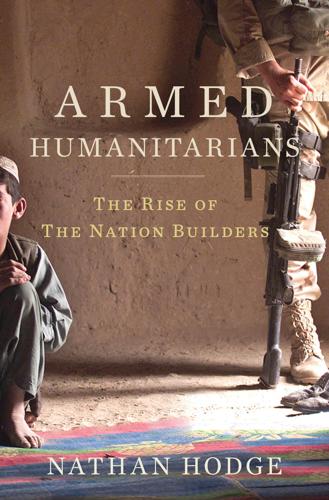
Armed Humanitarians
by
Nathan Hodge
Published 1 Sep 2011
Defense Department officials and diplomats had negotiated overflight rights, access to airstrips, and refueling stops in remote locations along the southern rim of the former Soviet empire. I had boarded the Afghanistan-bound C-17 at Incirlik Air Force Base, an American base in southeastern Turkey that was the home to aircraft enforcing Operation Northern Watch, the no-fly zone over northern Iraq. Incirlik was a well-established base. The Air Force had occupied the place since the Cold War, and the base was laid out in a neat suburban grid. It looked like Abilene, Texas. I arrived at Incirlik on a Civil Reserve flight, a commercial airliner chartered by the military. As the plane taxied in at Incirlik, the arriving U.S. troops puzzled over their travel orders, trying to get a fix on their final destination.
…
When allied forces and relief workers scouted the region in early April 1991, they estimated that as many as a thousand people a day were dying of disease and exposure in the mountains along the Turkish border. Garner led an improvised task force of NATO troops to help protect the civilians, deliver food aid, and set up refugee camps. It was a muscular model of postwar disaster relief. U.S. military aircraft enforced a no-fly zone overhead, keeping Iraqi government forces in check and delivering relief supplies by air. Garner, then a major general, led Joint Task Force–Bravo, a multinational contingent built around the Twenty-fourth Marine Expeditionary Unit, to the town of Zakho.* His task was to prepare the town for an influx of Kurdish refugees coming down from the mountains.
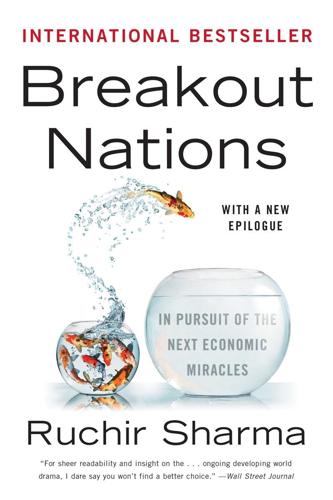
Breakout Nations: In Pursuit of the Next Economic Miracles
by
Ruchir Sharma
Published 8 Apr 2012
The economy, sluggish since the Asian crisis of 1998, continued to idle along, which only added to the political tension. As elections approached in July 2011, the thinking in Bangkok was that if the red shirts prevailed, the military would intervene again, setting off another cycle of confrontation. Thailand—the 1990s darling of global investors—had become a financial no-fly zone. A colleague of mine described the staples of the stagnant Thai economy as “rice, tapioca, and massage,” and he wasn’t entirely joking. No one saw the new regime coming. Just a month before the 2011 elections, Yingluck Shinawatra, Thaksin’s younger sister, wasn’t even on the political radar. A businesswoman and major player in Thaksin’s party, she had insisted she would not be a prime-ministerial candidate.
…
It is working to bring the vast swaths of formerly rebel-held territory back into play, and to exploit the country’s long-standing strengths, including a highly literate population and an advantageous location along key shipping routes to India and China. Most economists tend to ignore war because their data sets don’t capture it. The numbers may say a lot about prices and debt, but on the subject of what body counts or no-fly zones can do to growth they are usually silent. Markets are especially bad at foreseeing the financial implications of war—the most famous example, of course, is World War I, which took most investors entirely by surprise, leaving many with heavy losses despite the highly visible buildup of standing armies across Europe.

Our Enemies Will Vanish: The Russian Invasion and Ukraine's War of Independence
by
Yaroslav Trofimov
Published 9 Jan 2024
Like many Ukrainians, he was distraught by Western indifference as Russia rained death from the skies. “The world is watching us, praying for us, and not doing much else. Ukraine, unfortunately, is on its own,” he said. The United States and its allies had refused Zelensky’s requests to impose a no-fly zone over Ukraine, fearing a direct confrontation between NATO and Russia. But Ukrainian resistance was gradually changing the Western approach. With the Nord Stream 2 project already officially frozen by Germany, the EU on February 28 allocated 500 million euros to fund the Ukrainian Armed Forces, banned air connections with Russia, and outlawed transactions with the Russian Central Bank.
…
See Battle of Mykolaiv Mykolaiv Highway, 78, 328 Mykolaiv Patrol Police, 141–42 Myron, Captain, 227 N Nachman of Breslov, 130 Naletnikova, Galina, 97 National Guard of Russia, 37, 74, 89 National Guard of Ukraine, 48, 49, 82–83, 109, 172, 211, 354 NATO (North Atlantic Treaty Organization), 20, 57, 346 no-fly zone, 94 Russia’s “red lines,” 221, 222, 278 supplying of materiel, 161–62, 164, 347, 359 Zelensky and Ukraine membership, 21, 151 Naumov, Andriy, 150 Nauseda, Gitanas, 4 Nayyem, Masi, 224 Nayyem, Mustafa, 14, 224–25 Nazi Germany, 28, 39, 88–89, 92, 95, 96, 128, 129, 137, 144–45, 164, 189, 192, 205, 213, 286 Nemichev, Kostyantyn, 25–26, 73–74 neo-Nazis, 58, 82, 126, 152 Neptune R-360s, 162–63 Nesvoyeva, Natalia, 269, 287 New Russia (Novorossiya), 17, 19 Nikitichna, Vera, 209 92nd Mechanized Brigade, 74, 75, 121 93rd Mechanized Brigade, 73, 152–53 95th Air Assault Brigade, 49–50 NLAWs (Next Generation Light Anti-Tank Weapons), 28, 31, 63, 98, 104, 161, 201, 203 “Nobody loves losers,” 357 Nord Stream 2, 19, 94 North Macedonia, 150 Nova Kakhovka, 235 nuclear weapons, 19, 162, 192, 221–22, 277–79, 286, 321 “nullified,” 348–49 Nuzhin, Yevgeny, 336 Nykyforov, Sergii, 214–15 O Obama, Barack, 19, 27 Obolon, 55 Ochakiv Naval Base, 142 Odesa, 17, 220, 242–43, 361 oil and gas, 15, 26, 190, 193 Nord Stream 2, 19, 94 Okhlobystin, Ivan, 297–98 Okhmatdyt Children’s Hospital (Kyiv), 94 Okhtyrka, 72–73 Olenivka detention camp, 172–73, 243–44 Oliynyk, Maryna, 183 106th VDV Airborne Division, 139, 234 126th Coastal Defense Brigade, 134 150th Motorized Rifle Division, 85, 126 155th Marine Brigade, 102, 336–37, 351 “On the Historical Unity of the Russians and Ukrainians” (Putin), 21–22 Operation Bakhmut Meatgrinder, 335–36, 342, 362 Orange Revolution of 2004, 14, 219 “orcs,” 128, 134, 142, 303 Order of Courage, 324 Organization of Ukrainian Nationalists (OUN), 144–45 Orlan-10s, 103 Oskil River, 270–71, 273, 275, 281, 284, 296 Ottoman Empire, 81, 248 P Paevska, Yulia, xiii, 83–84, 125, 136–37, 226 Palamar, Svyatoslav, 137, 280 Panteleyeva, Ulyana, 90–91 “Partisan, The” (song), 131 Patriot MIM-104 missiles, 332, 344–45, 350, 361 peace negotiations, 92 in Belarus, 19, 58, 92, 149–50, 153, 154 grain exports, 242–43 in Istanbul, 149–55, 157–58, 242–43 Pechelulko, Oleh, 118–19 Pechersk, 1, 38, 39 Pelosi, Nancy, 345 Penn, Sean, 5, 46, 55 Perebeynos, Tatiana, 101, 215 Persian Empire, 348 Peskov, Dmitry, 306, 327 phosphorus bombing, 200 Pinchuk Art Centre (Kyiv), 238, 332 Pion 2S7s, 90 Plehve, Vyacheslav von, 272 Poddubny, Yevgeny, 153 Podil, 97, 99, 316–17, 355 Podolyak, Mykhailo, xiii, 38, 57–58, 92, 154, 161, 223 Poland-Ukraine relations, 144–45 Polish-Ukrainian border, 57, 59, 143–44, 179–80 Polovets, 198 Polyakov, Sergey, 352 Popasna, Battle of, 187–88, 251, 255 Poroshenko, Petro, xiii, 16, 20, 219, 356 author’s meeting with, 1–3 election of 2019, 1, 20–21, 79, 150 Potemkin, Grigoriy, 248 “Potemkin villages,” 248 Potemkine, 248–50, 264, 274 POWs (prisoners of war), 125, 172, 243–44, 279–80 prisoner exchanges, 21, 52, 163, 226, 279–80, 336 Presidential Office Building (Kyiv), 38, 39, 56–57, 63, 238 Prigozhin, Yevgeny, xiv, 185–88.

What's Left?: How Liberals Lost Their Way
by
Nick Cohen
Published 15 Jul 2015
After the humiliating defeat in Kuwait, they assumed the Iraqi army would seize the radio stations and install a sensible general. They waited, and kept on waiting because once a totalitarian regime is secure its totalitarian methods prevent its overthrow. With Saddam clearly going nowhere, the US, UK and France tried other remedies. No-fly zones were established. They helped the Kurds in the north escape Baathist rule, but brought no good to the rest of the country. Sanctions were imposed which wiped out legitimate businesses while allowing black marketeers to flourish. The United Nations tried to relieve the suffering by establishing an ‘oil-for-food’ programme.
…
In his speeches he declared that it was foolish to regard Iraq as a sovereign nation whose internal affairs were its own business, and not only because of the crimes against humanity the Baathists had committed. Iraq’s political system was now the responsibility of the international community, he argued. The United Nations had imposed sanctions and no-fly zones but had left Saddam Hussein in power. Iraqis were ruled by the Baathists, and punished because the Baathists ruled them. His audiences tut-tutted and offered what sympathy they could. Few had the faintest idea what to do. At the end of a talk in Washington DC, a well-dressed middle-aged man with a lined face and an intense gaze approached Makiya and offered him an apology.

Waco: David Koresh, the Branch Davidians, and A Legacy of Rage
by
Jeff Guinn
Published 24 Jan 2023
The Branch Davidians assumed it was another fleet of ATF gunners. In fact, they were helicopters from TV stations maneuvering for close-ups. It took some time for Lynch to reassure Martin that it was the media, rather than a fresh assault by ATF. The FAA promptly declared the skies over and around Mount Carmel to be a no-fly zone. ATF’s retreat had not been entirely complete. Agent Robert White assigned a few volunteers to set up perimeters, mostly around the southwest corner of the Mount Carmel property. It was intended as a first line of defense should the Branch Davidians launch an armed attack somewhere in the direction of Waco’s city limits.
…
* * * The news media, penned up two miles from the Branch Davidian property, could see very little of the action. “But you knew what was happening,” Carlton Stowers recalls. “We all knew that it wouldn’t end pretty.” Some cable and major news networks had long-range cameras on the ground and helicopters hovering on the edges of the Mount Carmel no-fly zone, so Americans all over the country were able to have a relatively unobstructed view of the chaotic proceedings. * * * About 9 a.m., bugs picked up Steve Schneider saying that he wanted to tell the FBI about Koresh’s progress in crafting the Seven Seals manuscript. Even with clouds of gas permeating much of Mount Carmel, the Branch Davidians still held some hope that if the FBI understood that Koresh was working hard and keeping his promise, agents might relent and keep their promise to wait until his writing was complete.
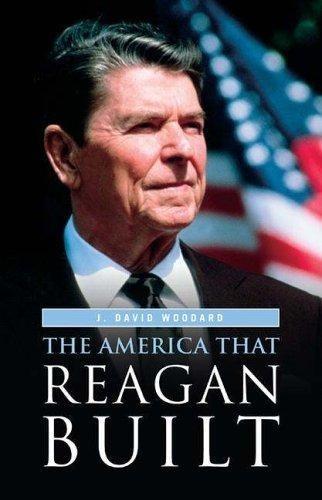
The America That Reagan Built
by
J. David Woodard
Published 15 Mar 2006
A U.N. resolution passed in November 2002 stated that Saddam had been in ‘‘material breach’’ of every agreement since the end of the first Persian Gulf War. From time to time, it looked like the troops might be headed back. After Saddam was evicted from Kuwait in 1991, the United States pursued a policy of aggressive containment. U.S. and British warplanes flew sorties and bombed targets over two no-fly zones established in the north to protect the Kurds and in the south to protect the Shiite Muslims. With the war over, the United Nations became concerned about deteriorating famine and diseases in the country, with catastrophe a real possibility. The thought was that domestic unrest would lead to Iraqis rising up to throw off the yoke of Saddam Hussein.
…
He continued to manipulate the Oil-for-Food program for his own gain, and used it to create divisions in the French, British, and Russian delegations to the United Nations to get economic sanctions lifted. He was amazingly successful in persuading the international community that his intents were peaceful. In Washington, George W. Bush was unconvinced. The president was not interested in economic embargos. The antiseptic notion of launching a cruise missile or having fighter pilots bomb in the no-fly zone was an option he categorically rejected. While the president was at Camp David with his senior advisors to discuss the Afghanistan war plans, Iraq was part of the agenda, and no meeting adjourned without discussion of the regime of Saddam Hussein and his role in the support of worldwide terrorism.
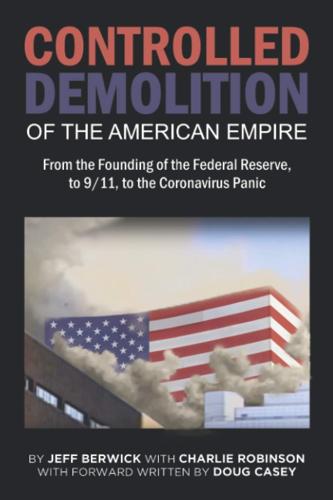
The Controlled Demolition of the American Empire
by
Jeff Berwick
and
Charlie Robinson
Published 14 Apr 2020
They do this by stocking the news organizations with retired generals playing the role of “Military Analysts” that just so happen to also sit on the Board of Directors for some of these large weapons manufacturers. They speculate about the different ways of removing a certain dictator from power, clearing a batch of “terrorists” from a particular region, or imposing a “No Fly Zone” on a country that is not doing what the United States has instructed them to do. The media then leverages the implied trust that this former General has with the viewing audience to create a list of potential options that must be considered, then the permanent puppets that man the anchor desks close the doors to the echo chamber and pound away at these very limited options until the insanity starts to wear off and the concept of invading a country that has done nothing to the United States starts to seem like not only a reasonable option but a priority that needs to be put into action immediately.
…
Her response was what one would expect from a Globalist hellbent on redrawing the Middle East while thinning the herd and trying to justify their imperialist ambitions. A reprehensible statement that underscores the mentality of empire builders that operate under the philosophy that the ends always justify the means. Placing sanctions on countries and imposing “No-Fly Zones” is a passive- aggressive way of declaring war without actually doing so, and neither of those things makes Americans safer. Just stop and ask how placing sanctions on Syria makes the United States safer? It does not, and the suggestion that somehow it does is ludicrous. America has been involved in some kind of war during 225 out of the nation’s total 242 years of existence.
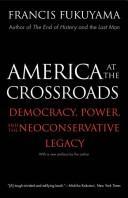
America at the Crossroads: Democracy, Power, and the Neoconservative Legacy
by
Francis Fukuyama
Published 20 Mar 2007
There were, however, other less alarmist yet cogent reasons for going to war that the administration could have emphasized that would have left it in a better political position after the war. The first and most important had to do with the untenability of the prewar sanctions regime and the costs it was incurring. Maintenance of no-fly zones over Iraq required a continuing U.S. military presence in Saudi Arabia long after the time that Dick Cheney, as President George H. W. Bush's defense secretary, had promised U.S. forces would be withdrawn. It was the American presence that Osama bin Laden seemed to mind to a much greater extent than support for Israel or other Arab regimes.
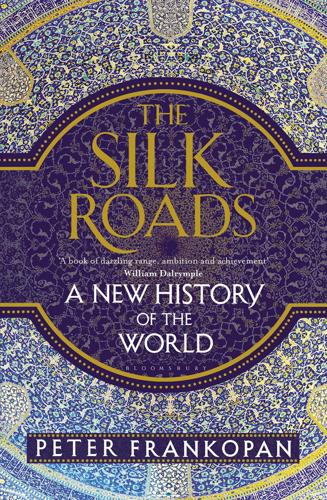
The Silk Roads: A New History of the World
by
Peter Frankopan
Published 26 Aug 2015
‘I think it is a very hard choice,’ Albright replied; nevertheless, she went on, ‘we think the price is worth it’.16 Sanctions were not the only steps taken against Iraq following the ceasefire. No-fly zones were imposed to the north of the 33rd parallel and to the south of the 36th parallel soon after the ceasefire was agreed – patrolled by nearly 200,000 armed overwatch sorties flown by US, French and British warplanes in the 1990s.17 These no-fly zones, which between them covered more than half of Iraqi territory, were ostensibly established to protect the Kurdish minority in the north and the Shīite population in the south.
…
Lambeth, The Unseen War: Allied Air Power and the Takedown of Saddam Hussein (Annapolis, 2013), p. 61. 18For an overview here, see C. Gray, ‘From Unity to Polarization: International Law and the Use of Force against Iraq’, European Journal of International Law 13.1 (2002), 1–19. Also A. Bernard, ‘Lessons from Iraq and Bosnia on the Theory and Practice of No-Fly Zones’, Journal of Strategic Studies 27 (2004), 454–78. 19Iraq Liberation Act, 31 October 1998. 20President Clinton, ‘Statement on Signing the Iraq Liberation Act of 1998’, 31 October 1998, PPPUS: William J. Clinton, 1998, pp. 1938–9. 21S. Aubrey, The New Dimension of International Terrorism (Zurich, 2004), pp. 53–6; M.
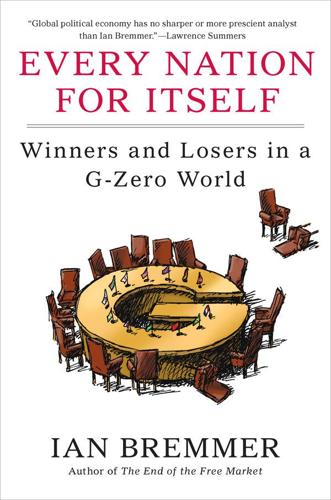
Every Nation for Itself: Winners and Losers in a G-Zero World
by
Ian Bremmer
Published 30 Apr 2012
Having alienated virtually everyone outside his country, Libyan strongman Muammar Gadhafi took to the radio one February evening to alert the citizens of Benghazi, in the east of the country, that his soldiers were advancing on the city in search of rebels. “Prepare yourselves for tonight. We will find you in your closets,” he warned. Fearing that Gadhafi was about to massacre huge numbers of his own people, the Arab League called for establishment of a no-fly zone over the country. The United States and its European allies seized the opportunity to push Resolution 1973 through the UN Security Council, a declaration that allowed Western powers to use “all necessary measures” to protect the Libyan people.4 That proved a broad enough mandate to allow NATO the political cover it needed to eventually bomb Gadhafi from power.

And Then All Hell Broke Loose: Two Decades in the Middle East
by
Richard Engel
Published 9 Feb 2016
I remember sitting at home in February 2001, with a pile of newspapers in front of me, thinking that it was a month of grim foreboding. On February 6, Sharon trounced Barak in the Israel elections. Ten days later, President Bush sent twenty warplanes to attack five air defense installations in Baghdad because of increased targeting of allied planes policing “no-fly” zones over Iraq that were imposed after the 1991 Gulf War. Bush had been in office less than a month, and 9/11 was still seven months away. Arab nations accused him of focusing on Iraq when the real Middle East crisis was the bloody showdown between the Israelis and Palestinians. By this time, even before Sharon formally took office on March 7, 2001, the Second Intifada was gaining ugly momentum.
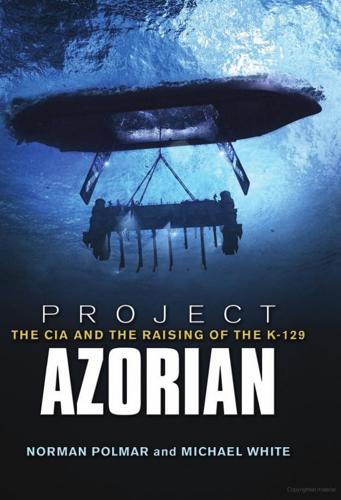
Project Azorian: The CIA and the Raising of the K-129
by
Norman Polmar
and
Michael White
Published 1 Dec 2010
The Soviet Navy had some knowledge of these capabilities, enough to realize that the SOSUS array connected by seafloor cable to the NavFac at Adak, Alaska, could detect a Petro-based submarine traveling eastward.10 Accordingly, the K-129 sailed south along 162°E to the 40th parallel and then turned eastward about March 3–4, toward her “holding” position some 1,000 nautical miles northwest of Oahu. The 40th parallel was significant because the U.S. Navy had established a “no-fly zone” between latitudes 39°N and 41°N, i.e., a distance of about 120 nautical miles. This zone was to avoid interference between P-3 Orion ASW/patrol aircraft flying out of Adak and Barber’s Point. The regular use of the 40th parallel for the east-west movement of Soviet diesel-electric submarines indicated that Soviet planners were aware of this restriction on U.S. airborne surveillance.

The Reluctant Spy
by
John Kiriakou
Published 30 Jan 2009
An NIE is a big deal; it’s supposed to represent the collective wisdom of the so-called intelligence community—not only the CIA, but the intelligence arms of the military services, the National Security Agency, and others. This was an opportunity to make a real name for myself, and I felt fairly confident going in, figuring I knew as much about Iraq as anybody in the intelligence community. So I wrote a paper that said Iraq could violate the no-fly zone, threaten the Shiites, threaten the Kurds, threaten Kuwait, continue to provoke us militarily, and continue to violate sanctions. But when I was done and reread my work, I thought, This is the worst analytical paper I’ve ever written. This is exactly what we’ve said every year for the past five years.

Antarctica
by
Kim Stanley Robinson
Published 6 Jul 1987
Which was only appropriate; but Val had judged him on their first meeting to be a typical Washington politician, not really interested in the ice itself. She liked it that he seemed impressed. And had tried to drink from Don Juan Pond! The pilots could have flown up and over the peaks of the Olympus Range directly to their destination, but as the destination was a Site of Special Scientific Interest and a no-fly zone, the whole complex of Balham Valley, McKelvey Valley, the Insel Ridge (another Dais-like mid valley ridge), and Barwick Valley was off-limits to normal scientific investigation, all fly-overs, and all adventure treks. This was to try to keep a part of the Dry Valleys as uncontaminated as possible, for baseline comparisons with the other more intensively studied and therefore polluted valleys.
…
"Those are Pliocene diatoms, and they grew here. " He raised a mug to toast them. "Here in this cold frozen hell. " The conversation shifted to the day's work in the field, and a long discussion of what they would do the following day. Wade and Val would be hiking out in the afternoon, to make their rendezvous with a helicopter on the edge of the no-fly zone. The scientists would hike downvalley partway with them. Harry said, "We'll either find some Sirius above Lake Vashka, or else just have a day of shits and giggles. " "Shits and giggles?" Wade said. "Recreation, " Misha explained. "I hate that expression, " Val announced firmly. "As if if you're not doing science you're not doing anything.
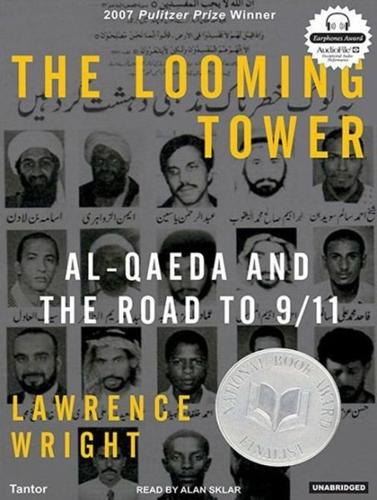
The Looming Tower: Al-Qaeda and the Road to 9/11
by
Lawrence Wright
Published 26 Sep 2006
His insurrectionary zeal was directed toward the United States, not toward his homeland. Many Saudis shared his hostility to the continuing American presence in the Kingdom, especially after Dick Cheney’s well-known pledge that they would leave. Ostensibly, the troops remained in order to enforce the UN-mandated no-fly zone over Iraq. By 1992, however, and certainly by 1993, there were enough new basing agreements in the region that the Americans could have withdrawn without jeopardizing their mission. But the Saudi bases were convenient and well appointed, and there didn’t seem to be a sufficiently pressing need to leave.
…
O’Neill went out to play a round of golf on the Quantico course. Suddenly everyone’s beepers went off. There had been a catastrophic explosion in Saudi Arabia, at the Khobar Towers military-housing complex in Dhahran. The building served as the barracks for the 4404th Airlift Wing, which was enforcing the no-fly zone in Iraq. Nineteen American soldiers had died and nearly four hundred other people were injured. O’Neill assembled a team of more than a hundred agents, support personnel, and members of various police agencies. The next day they were on an Air Force transport plane to Saudi Arabia. A few weeks later, O’Neill himself joined them, along with the director of the FBI, Louis Freeh.
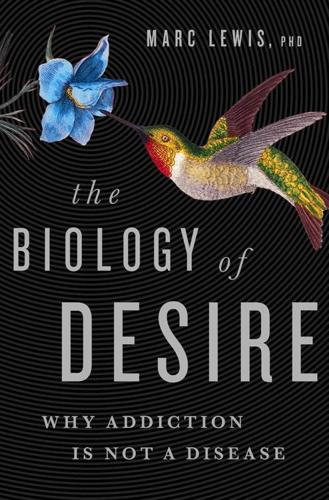
The Biology of Desire: Why Addiction Is Not a Disease
by
Marc Lewis Phd
Published 13 Jul 2015
I had to score beforehand when I was about to visit my daughter. So a four-hour visit would become a two-hour visit.” Megan wouldn’t freak out: she was used to it. Then, back in the car, the question was whether to have another hit right now. It was so present, so inviting, in its neat plastic gift wrap. And it would be his last chance before entering the no-fly zone, Vera’s territory. But he was already really high, and he didn’t want to be too hyper. Being with Megan . . . that should be a mellow time, not laced with breathtaking ideas, talking a mile a minute. And Vera would be watching him until she finally went shopping or whatever it was she did. Better call her.

Home Grown: How Domestic Violence Turns Men Into Terrorists
by
Joan Smith
Published 5 Apr 2019
Salman attended a local boys’ school where he is remembered as a far from outstanding pupil, bullied by other kids and nicknamed ‘Dumbo’ for his protuberant ears. When the Arab Spring reached Libya in 2011, Ramadan returned to his home country, where rival rebel groups were fighting to overthrow Gaddafi. In March that year, a coalition of NATO countries, including the UK, began military intervention in Libya, imposing a no-fly zone amid claims that the regime was committing crimes against humanity. The dictator went on the run but was captured by rebels near the city of Sirte and murdered in a particularly brutal way in October 2011. Ramadan Abedi has always denied being a member of the Libyan Islamic Fighting Group, a banned Islamist organisation, but the ISC report considers it ‘highly likely that Salman and Hashem’s extremist views were influenced by their father Ramadan and fostered by other members of their immediate family’.76 Ramadan had brought his children up in a strict Muslim household but Salman underwent a transformation in his father’s absence, drinking, smoking and going to parties.
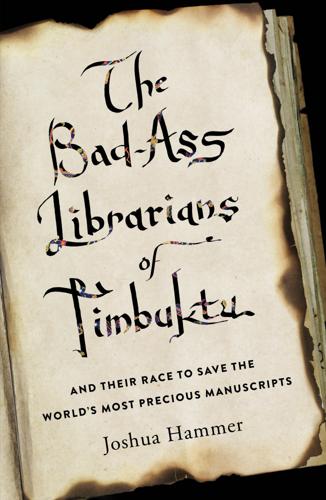
The Bad-Ass Librarians of Timbuktu: And Their Race to Save the World's Most Precious Manuscripts
by
Joshua Hammer
Published 18 Apr 2016
Qaddafi claimed that Osama bin Laden had put “hallucinogenic drugs” in Libyans’ Nescafé to turn them into rebels, and vowed not to step down until he had cleaned Libya house by house of the “rats” and “cockroaches.” At other times he vowed to die like a “martyr.” NATO forces, acting on a United Nations Security Council resolution, enforced a no-fly zone in Libyan airspace and attacked Qaddafi’s army. NATO bombs pulverized barracks, TV stations, communications towers, and Qaddafi’s residential compound in Tripoli. Haidara was astonished by the reversal of Qaddafi’s fortunes. Five years earlier the Libyan leader had made a state visit to Timbuktu—a three-day affair at the height of Qaddafi’s regional influence that had served as a showcase of his most erratic and megalomaniacal tendencies.
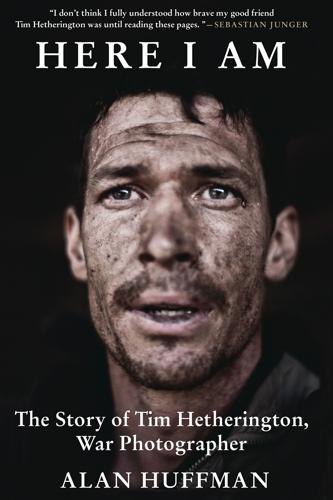
Here I Am: The Story of Tim Hetherington, War Photographer
by
Alan Huffman
Published 12 Mar 2013
I’m grateful to my literary agent, Patty Moosbrugger, who helped me work through many iterations of the proposal for this book and enthusiastically represented it; to Morgan Entrekin at Grove Atlantic, who is everything a writer fantasizes a publisher to be, and who got what this book is about; to my editor Peter Blackstock, who is a pleasure to work with, in every way; to associate publisher Judy Hottensen, director of publicity Deb Seager, and senior publicist Jodie Hockensmith, all at Grove Atlantic; to my fact-checker, April Simpson; and to my publicist, Scott Manning. Finally, I’m grateful to friends and family who encouraged and supported me, put me up during my travels, fed my dog, fretted over me while I was gone, and respected the no-fly zone during the time I was sequestered at home, writing the book: Marcia and David Abbott; Daniel Allmon; Luke and Missy Bartkiewicz; Jessica Crawford; Irem Durdag; Stu Davey; Mike Davey; Robbyn Footlick; Lee and Dick Harding; Paul and Libby Hartfield; Les and Corinne Hegwood; Ryan Nave; Tritta Neveleff and Hamp Shive; John McLeod; Ozgur Oral; Neil and Catherine Payne; Judy and John Seymour; Pam and Buzz Shoemaker; Andy and Jimmye Sweat; Chris Walker; Scottie and Melissa Harmon.
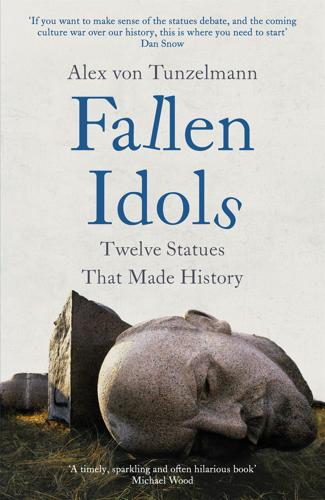
Fallen Idols: Twelve Statues That Made History
by
Alex von Tunzelmann
Published 7 Jul 2021
He invaded Kuwait in 1990, earning the condemnation of the United Nations. In January 1991, there was a military response from an international coalition led by the United States, including Egypt, France, Saudi Arabia and the United Kingdom. Saddam was forced out of Kuwait. Internationally, Iraq was humiliated: slapped with no-fly zones and ruinous sanctions, banned from developing nuclear, chemical or biological weapons. Internally, it was stricken with rebellions. Saddam put these down brutally. As president, Saddam modelled himself partially on Joseph Stalin. Both were peasant outsiders who, with exceptional ruthlessness, had made their way to the top.

The Slow Fix: Solve Problems, Work Smarter, and Live Better in a World Addicted to Speed
by
Carl Honore
Published 29 Jan 2013
The rule of thumb in civil aviation is that a typical air accident is the result of seven human errors. Each mistake on its own may be harmless, even trivial, but string them together and the net effect can be lethal. Flying modern fighter jets, with their fiendishly complex computer systems, is an especially risky business. While enforcing the no-fly zone over Libya in 2011, a US F-15E crashed outside Benghazi after a mechanical failure. A month earlier, two F-16s from the Royal Thai air force fell from the sky during a routine training exercise. What was surprising about the Typhoon incident over the North Sea was not that it happened but how Patounas reacted: he told everyone about his mistake.
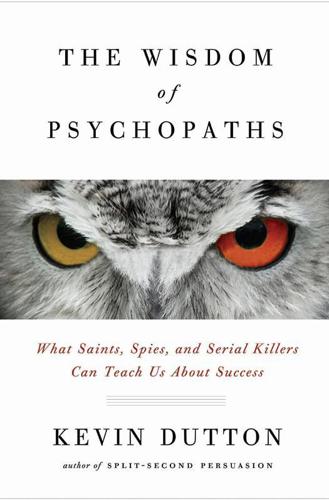
The Wisdom of Psychopaths: What Saints, Spies, and Serial Killers Can Teach Us About Success
by
Kevin Dutton
Published 15 Oct 2012
, Karim discovered that the application of a technique known as transcranial magnetic stimulation (TMS)5 to the part of the brain implicated in moral decision making, the anterior prefrontal cortex, elevated participants’ lying quotient. It gave them a higher Lie Q. Precisely why this should be the case is not immediately obvious, and researchers are considering their options. But one possibility is that TMS-induced inhibition of the anterior prefrontal cortex implements the restriction of a neural no-fly zone over conscience, sparing the liar the distractions of moral conflict. Such a hypothesis is consistent with research on psychopaths. We know from previous studies, for instance, that psychopaths have reduced gray matter in the anterior prefrontal cortex—and recent analysis using diffusion tensor imaging (DTI),7 conducted by Michael Craig and his coworkers at the Institute of Psychiatry in London, has also revealed reduced integrity of the uncinate fasciculus: the axonal tract (a kind of neural aqueduct) connecting the prefrontal cortex and amygdala.

After Zionism: One State for Israel and Palestine
by
Antony Loewenstein
and
Ahmed Moor
Published 14 Jun 2012
Writing in April 2011, an analyst in Gaza argued: The raising of the Palestinian flag in Tahrir Square in front of the Israeli embassy in Cairo was an important reason why the recent [March 2011] aggression on the Gaza Strip stopped after it became clear to the Israeli government that Egypt, its leadership and people, reject any Israeli aggression on Gaza. Also the role played by the Egyptian Foreign Ministry in curbing the attacks was very important as well as the decision made by the Arab League asking the UN Security Council for a no-fly zone over Gaza.63 He later wrote that during the March 2011 offensive on Gaza, Egypt sent a message to Tel Aviv through the EU, which stated the following: “Gaza is the backyard of Egyptian national security. Therefore we consider any attack on Gaza now as a direct threat to Egypt. ... War on Gaza is not allowed anymore.”64 Egyptian intervention also ended Israel’s retaliatory attack against Gaza in August after eight Israelis were killed and another thirty wounded in an attack by militants in southern Israel.

The Post-American World: Release 2.0
by
Fareed Zakaria
Published 1 Jan 2008
* It is not a subject for this book, but I was in favor of the effort to oust Saddam Hussein, though I argued from the start for a much larger force and an internationally sanctioned intervention and occupation. My reasoning was mostly related to the fact that Western policy toward Iraq had collapsed—sanctions were leaking, countless civilians were dying because of the embargo, Al Qaeda was enraged by our base in Saudi Arabia, from which we operated the no-fly zone—and I believed that a more modern and moderate Iraq in the middle of the Arab world would help break the dysfunctional political dynamics of the Arab world. I opposed, from the first few weeks, Washington’s occupation policies. In retrospect, I underestimated not merely the administration’s arrogance and incompetence but also the inherent difficulty of the task.
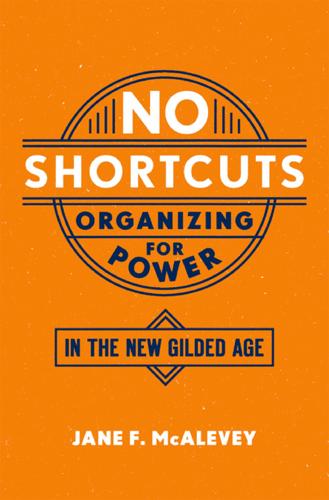
No Shortcuts: Organizing for Power in the New Gilded Age
by
Jane F. McAlevey
Published 14 Apr 2016
If workers at nursing homes not selected by the employer called 775 and wanted help forming a union, the union would be bound to decline. New Labor has a term for agreeing to create large geographic areas (an entire state, or perhaps a region of the U.S.) in which workers have no right to form a union, even if workers want one: establishing no-fly zones. In Washington, Rolf embraced the deal immediately, although it would take another year or two before the final “Agreement to Advance the Future of Nursing Home Care in Washington” could be ironed out. Bigger states, such as California, were a priority for the employers (and therefore for Stern).18 In 2005 the union and Rolf set to work implementing the agreement, and the deal was finalized between Local 775 and Washington state nursing-home employers in 2006.19 That same year, not coincidentally, 775 lobbied hard for, and secured, sufficient increases in nursing-home funding to make it possible under the secret accord to unionize nursing homes, under what was called Phase I of the employer agreement.

Orange Sunshine: The Brotherhood of Eternal Love and Its Quest to Spread Peace, Love, and Acid to the World
by
Nicholas Schou
Published 16 Mar 2010
So many people had converged on Laguna Canyon that by the end of the first day there was no food left. Shields tried to hire a helicopter to deliver food at the concert, but after calling every airport in Southern California, he concluded that the Federal Aviation Administration had declared Laguna Beach a no-fly zone. “They probably did that because of the plane that dropped all the acid,” he says. “We needed food, so I drove up to L.A. and bought a bunch of veggie burgers and avocados and tomatoes and fruit. With Fred Lewis’s help, Shields spoke with the National Guard, loaded up two or three trucks and drove around the blockades.
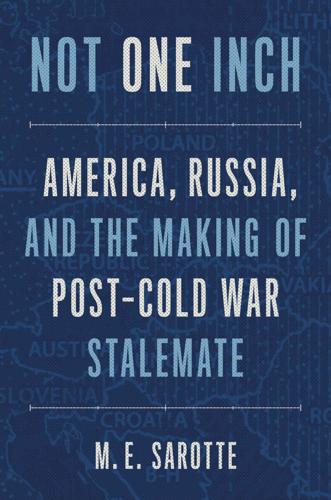
Not One Inch: America, Russia, and the Making of Post-Cold War Stalemate
by
M. E. Sarotte
Published 29 Nov 2021
As a result, she developed an abiding hatred of the new president.92 On top of these domestic worries was the worsening violence in Bosnia.93 In 1992, Clinton had criticized what he saw as Bush’s passivity in the face of Bosnian bloodshed, but now matters were getting uglier on his watch.94 The fighting there seemed to call not only Clinton’s but also NATO’s credibility into question: how could they provide leadership in European security writ large if they could not handle the conflict in former Yugoslavia? In an effort to stem some of the bloodshed, NATO in April 1993 launched an operation called “Deny Flight,” meant to enforce a UN no-fly zone over Bosnia-Herzegovina. The operation was a watershed moment for NATO, which found itself going “out-of-area,” meaning flying outside of its geographic area of defensive responsibility, for the first time ever.95 But it left many Americans wondering whether Clinton had forgotten to focus on the domestic economy and whether he could master the chaos in his own White House.
…
Even though part of the justification for the Partnership was to have a NATO-adjacent entity to deal with Bosnia, the alliance assumed that role itself. On February 28, 1994, US F-16 fighter jets in the service of NATO shot down four Serbian aircraft carrying out a bombing mission in violation of a UN no-fly zone—NATO’s first combat action since its founding in 1949.61 In a contentious meeting after that, the secretary general, Manfred Wörner—who was now suffering from advanced cancer and needed a physician present just to get through meetings—convinced allies to agree to expand the alliance’s role in Bosnia even further.
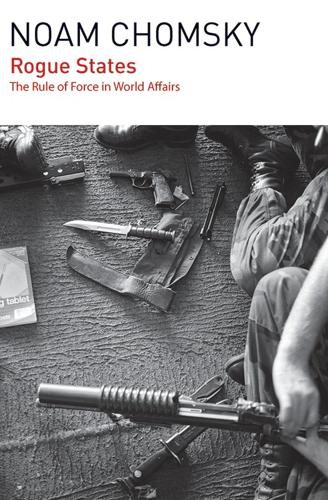
Rogue States
by
Noam Chomsky
Published 9 Jul 2015
The parliamentary inquiry into the ongoing atrocities supported lavishly by Washington perhaps received oblique acknowledgment in a report by New York Times bureau chief Stephen Kinzer on Turkey’s current progress, shown by the military’s willingness to permit films that “portray the torture that was widespread in military prisons” in the early 1980s.5 Nevertheless, despite the great success achieved by some of the most violent state terror of the 1990s, military operations continue, while Kurds are still deprived of elementary rights.6 On April 1, 2000, 10,000 Turkish troops began new ground sweeps in the regions that had been most devastated by the US-Turkish terror campaigns of the preceding years, also launching another offensive into northern Iraq to attack Kurdish guerrilla forces (PKK)—in a no-fly zone where Kurds are protected by the US air force from the (temporarily) wrong oppressor. Asked about the renewed operations in Iraq, State Department spokesperson James Rubin said that US “policy remains the same. We support the right of Turkey to defend itself against PKK attacks, so long as its incursions are limited in scope and duration and fully respect the rights of the civilian inhabitants of the region”; he declined to answer the question whether Turkey had been “attacked,” stating only that the US had no “independent confirmation” of Turkish military operations in this region of intense surveillance and regular US bombardment.7 As the renewed Turkish campaigns were beginning, Secretary of Defense William Cohen addressed the American-Turkish Council, a festive occasion with much laughter and applause, according to the government report.8 He praised Turkey for taking part in the humanitarian bombing of Yugoslavia, apparently without embarrassment, and announced that Turkey had been invited to join in co-production of the new Joint Strike Aircraft, just as it has been co-producing the F-16s that it used to such good effect in approved varieties of ethnic cleansing and atrocities within its own territory, as a loyal member of NATO.
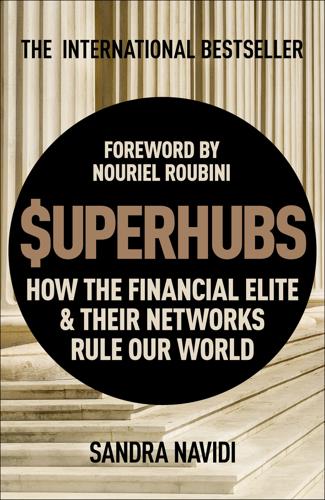
SUPERHUBS: How the Financial Elite and Their Networks Rule Our World
by
Sandra Navidi
Published 24 Jan 2017
The precious conference badge gives attendees access to restricted and highly secured areas. During the WEF, Davos is the number-one terrorist target in the world: 5,000 heavily armed police officers and soldiers guard the village and man barbed-wired checkpoints. Masked snipers parole the rooftops, and fighter jets sit on alert to protect the no-fly zone. The security team controls the chaos with Swiss precision. Only officially credentialed participants are granted access, all of whom—except heads of state—must leave their bodyguards at the door and wait in line with everyone else. There is no preferential treatment for the upper echelons here.

Bezonomics: How Amazon Is Changing Our Lives and What the World's Best Companies Are Learning From It
by
Brian Dumaine
Published 11 May 2020
At Amazon Prime Air, which has offices in Seattle, Tel Aviv, Cambridge, England, and Paris, Roth and his team are building a wholly automated system—no air traffic controllers—to keep the drones out of the way of planes and helicopters and other drones. The system will also allow the FAA to track the drones and to create no-fly zones during emergencies. If drones start frequenting the skies, Amazon can expect serious blowback from local communities. Some worry about privacy—are the cameras on the drones being used to spy on people? Drone makers say the cameras are low resolution and only meant to aid in navigation and to improve the drone’s performance.

Why We're Polarized
by
Ezra Klein
Published 28 Jan 2020
None of us can amass sufficient expertise on such a range of topics. Political parties are shortcuts. The APSA report called them “indispensable instruments of government,” because they “provide the electorate with a proper range of choice between alternatives of action.” We may not know the precise right level for taxes, or whether it makes sense to create a no-fly zone over Syria, but we know whether we support the Democratic, Republican, Green, or Libertarian Party. The act of choosing a party is the act of choosing whom we trust to transform our values into precise policy judgments across the vast range of issues that confront the country. “For the great majority of Americans,” the authors write, “the most valuable opportunity to influence the course of public affairs is the choice they are able to make between the parties in the principal elections.”

Rocket Billionaires: Elon Musk, Jeff Bezos, and the New Space Race
by
Tim Fernholz
Published 20 Mar 2018
Yet the dreams of science fiction readers hardly mattered to the people who controlled the space program. This was no time for the United States, at that moment enjoying a period of global hegemony, to lose its ability to get to orbit. The military desperately wanted access to space, especially in its new role as something of a global police force in the post-Soviet, pre-9/11 era. Enforcing a no-fly zone over Saddam Hussein’s Iraq, the most active military mission at the time, relied on satellite communications and imaging and positioning technology. Without the ability to maintain a constellation of satellites in orbit, the United States would be in no position to project military force around the world.

Hate Inc.: Why Today’s Media Makes Us Despise One Another
by
Matt Taibbi
Published 7 Oct 2019
Later, when colleagues on that same trip went after Kerry for reacting after Matt Drudge published an unsubstantiated rumor that Kerry had a mistress, I made the mistake of asking other reporters on the plane why we were giving this story life without first doing any work to see if it was true. Reporters took in the treacherous fact that I was doing a story on us with varying degrees of fury. “This,” one reporter said to me, waving a hand across the press seats in the Kerry campaign plane, “is a fucking no-fly zone, dude.” After that incident, the Kerry campaign (which had been victim to the Drudge bumrush) acquiesced to demands from other trail reporters, and had me sent to the back of the plane with the techies and documentarian Alexandra Pelosi. This should have struck me as a vivid demonstration of the unnatural relationship between campaigns and press corps, and of the group policing instinct that also led campaign reporters to school candidates in various unwritten political rules about “nuance” and “likability.”

Reaper Force: The Inside Story of Britain’s Drone Wars
by
Dr Peter Lee
Published 14 Jul 2019
With a combination of a degree of talent, patient instructors, good fortune, struggling through the difficult sorties and repeating a record number, and being in the right place at the right time, he came through and, in 1997, was flying Tornado GR1 ground attack fast jets. Johnny was soon combat ready, followed by an immediate deployment to Turkey where he would fly over Northern Iraq and help to enforce the No-Fly Zone against Saddam Hussein’s regime. At least he would have gone immediately to Turkey if he hadn’t been bitten by Eric, the squadron’s pet Rock Python. More interesting stuff happened to him over the next few years, including his involvement in the 1999 Kosovo air campaign. But anyone daft enough to be bitten by a Rock Python (twice) doesn’t deserve to have all the details told.

Test Gods: Virgin Galactic and the Making of a Modern Astronaut
by
Nicholas Schmidle
Published 3 May 2021
Only now was he ready to dig out the cockpit video and tell me what really happened. * * * ON THE MORNING of April 4, 1994, my dad took off from an air base at the foot of the Dolomites. He was dreading the flight. It was his last sortie. He had been sleeping in a tent for three months, enforcing the no-fly zone over Bosnia. But in a few days his F-18 squadron was fixing to go home without having fired a shot, and not for lack of targets; Serbs were slaughtering Muslims in the foggy villages below. My dad and his wingman flew southeast, over the town of Goražde. Serb tanks and armored personnel carriers had swept into the town from the south, shelling Muslims living north of the bridge.

A New History of the Future in 100 Objects: A Fiction
by
Adrian Hon
Published 5 Oct 2020
Some parties opt to hire groups of aerostats for parties, docking them to increase the space for their guests, but most guests prefer to spend their time alone, contemplating the white peaks. The combination of a staggeringly high price tag, the near-complete physical isolation from civilization, and a rigorously enforced no-fly zone surrounding the area has resulted in High Dragon becoming the favored destination of the ultra-rich on Earth (but perhaps not off it). Of course, the fact that rising sea levels have placed the remaining desirable island resorts under UN stewardship hasn’t harmed High Dragon’s prospects. Only the richest 0.05 percent in the world could reasonably afford to visit High Dragon.
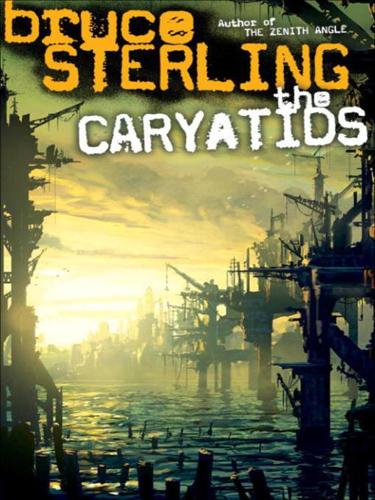
The Caryatids
by
Bruce Sterling
Published 24 Feb 2009
George was a merchant and a fixer, never the kind of man she liked. Yet George, for all his countless demerits, had a definite rapport for ubiquitous systems. George had a positive genius for handling border delays, security compliances, fuel costs, detours on the planet’s weather-shattered roads and bridges, documentation hurdles, no-fly zones and confiscatory carbon-footprint taxes, port congestion, cargo security, regulations both in-state and offshore, liaisons with manufacturers, out-sized and overweight shipping modules … Boring things, dull things. Yet George could ship things to her, and that mattered. Bravery mattered much less.

Halting State
by
Charles Stross
Published 9 Jul 2011
Then you fiddle with the menus in the MilSpec glasses Kemal gave you until you dredge up a local CopSpace overlay so you can see what the hell’s going on. Your earlier diagnosis of a traffic clusterfuck is confirmed: Flashing red diversion routes are springing up all over the north side of the city like chicken-pox. Overhead, a vast swirly cylinder delineates a no-fly zone—they’re diverting flights in and out of Turnhouse, airliners that would normally be on final approach over the Firth of Forth. You wince, involuntarily. What do they think— Whoops. You’re halfway along the block, behind Liz, and now you notice a bunch of support vehicles parked just round the corner: fire engines, a fire brigade support truck, a couple of ambulances, and the big mobile HQ from Fettes Row.
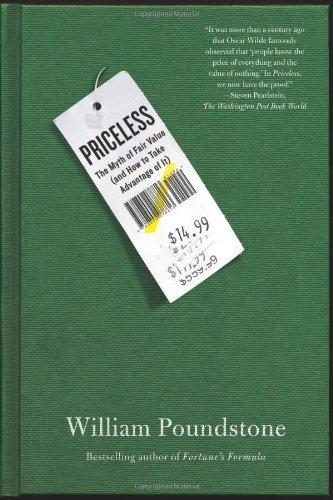
Priceless: The Myth of Fair Value (And How to Take Advantage of It)
by
William Poundstone
Published 1 Jan 2010
Perhaps they didn’t much in the world of our distant ancestors. But things have changed in the past few millennia (a blink of the eye in evolutionary terms). Inventions like writing, numbers, law, and money have introduced new types of challenges. Today’s conflicts are resolved by committing to a number—a price, a wage, a boundary, a no-fly zone—that casts a shadow far into the future. In these situations, we can have cause to regret the arbitrary in our choosing and pricing. As Tversky and Kahneman wrote, “Incoherence is more than skin deep.” Ward Edwards lived long enough to see his reputation eclipsed by those of his former students.
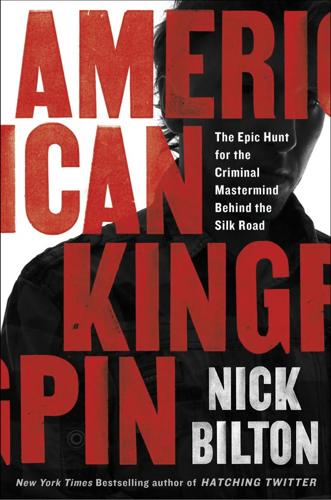
American Kingpin: The Epic Hunt for the Criminal Mastermind Behind the Silk Road
by
Nick Bilton
Published 15 Mar 2017
But what choice did he have? It wasn’t like he could go out west to Silicon Valley and get a job at a start-up. After the bubble had popped a few years earlier, companies that had been built on a wing and a prayer had siphoned people’s retirements into thin air and collapsed, leaving San Francisco a metaphorical no-fly zone. What about going east? Wasn’t there opportunity on Wall Street for someone as clever as Ross? No way. The banks were collapsing from the housing market crash. And he certainly couldn’t settle down and live happily ever after with his girlfriend; his dream of marriage and a white picket fence had been bulldozed by several other men.
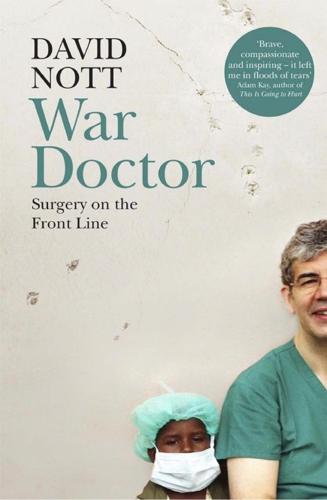
War Doctor: Surgery on the Front Line
by
David Nott
Published 21 Feb 2019
The Americans promised to supply arms to the FSA but insisted on vetting the groups who’d be receiving the weapons – nervous that high-tech hardware such as anti-aircraft missiles might end up in the hands of extremists. As a result, very few weapons got through, and Assad’s warplanes and helicopter gunships could continue to rain down missiles onto civilian areas and rebel bases. The international community also refused to enforce a no-fly zone over the areas of northern Syria held by the rebels. Assad had pulled a clever trick. In denouncing the protests against him in spring 2011, he claimed they were the work of radical Islamic extremists rather than ordinary Syrians who felt they should have the right to choose their own government.

Sandworm: A New Era of Cyberwar and the Hunt for the Kremlin's Most Dangerous Hackers
by
Andy Greenberg
Published 5 Nov 2019
What they don’t consider is the degree to which the West has become dependent on the internet and automation—vastly more than adversaries like North Korea or even Russia. “As one of the most connected nations, we’re more dependent and more exposed,” Corman said. “And we stand to lose much more.” Instead of a full Geneva-style answer, though, Corman advocates a narrower set of rules: no cyberattacks on hospitals, for instance—what he calls a “cyber no-fly zone” around medical targets. “Fine, just say hacking hospitals, deliberately or otherwise, constitutes a war crime,” Corman said. “Cyber’s gonna cyber, but you better be damn flawless in your execution. You fuck up and hit a hospital, you get the international war crime, you’re going to The Hague.” Of course, any debate over those diplomatic measures remains academic.

The 9/11 Wars
by
Jason Burke
Published 1 Sep 2011
In Baghdad expensive restaurants were full while over half the country’s children were malnourished, many critically.2 The wounds of the country were hidden, not least because no one risked speaking frankly to reporters. Almost everyone in Iraq lived in fear. The country was divided into three. In the mountainous north were the 4 million Kurds, semi-autonomous under the umbrella of the northern no-fly zone patrolled by US and British aircraft since 1991 and set on defending their precarious liberty not just from Baghdad but from Ankara too. Below Mosul and the contested, mixed city of Kirkuk with its surrounding oil fields, the majority of the population across the central belt of the country was Sunni Arab.
…
John Solomon, ‘First declassified Iraq documents released’, Associated Press Online, March 16, 2006. Tariq Aziz, the former Iraqi foreign minister, later told interrogators that Saddam ‘had only ever expressed negative sentiments about bin Laden’. Robert Burns, ‘Iraqi: Saddam “delighted” in terror attacks on US’, Associated Press, September 22, 2010. 19. Technically outside the no-fly zone and thus the haven, Mosul and its tradition of Islamism had been and was an important factor. 20. For more see Burke, Al-Qaeda, pp. 225–7, which draws on interviews with militants in Kurdish custody and with Kurdish intelligence officers in August 2002 in Suleimaniyah, Iraq, as well as Western intelligence documents, principally the interrogation report of German members of the al-Tawhid group. 21.

A Sea in Flames: The Deepwater Horizon Oil Blowout
by
Carl Safina
Published 18 Apr 2011
My sister’s been helping, too, and her e-mails are getting kicked back to her. I’m not paranoid, but what if somebody’s interfering with our communications? Do you know how I could find out? Since the day the president came through, my phone really hasn’t worked very well. I don’t know. But that’s what’s happened.” “Every time the oil moves, they change the no-fly zone. They don’t want us to see.” “How many notebooks do you fill up before you have a book?” “Karen’s trying to get her kids out of town. There’s nothing for them to do. Everything we do is sailin’, crabbin’, boatin’, shrimpin’, surfin’.” “I’m really worried about Lori; these dolphins are like her children.”

Discover Maui
by
Lonely Planet
It looks damn hard and certainly takes stamina, but if you already know how to ride a board, there’s a good chance you’ll master it quickly. According to surf legend Robby Naish, who pioneered kitesurfing, it’s the most accessible of all extreme sports. There’s no better place to learn than on Maui’s Kite Beach, at the western end of Kanaha Beach Park. Visiting kitesurfers need to check with locals to clarify the no-fly zones. Get the lowdown from the Maui Kiteboarding Association (www.mauikiteboardingassociation.com) and Maui Kitesurfing Community (www.mauikitesurf.org) . Outrigger Canoeing Polynesians were Hawaii’s first settlers, paddling outrigger canoes across 2000 miles of open ocean – so you could say canoeing was Hawaii’s earliest sport.

Effendi
by
Jon Courtenay Grimwood
Published 1 Jan 2002
Instantly the camera crews moved closer, unleashing a firestorm of flashguns and shouted questions. “Not like that,” Raf said as he slapped down the gun. “Get on the wire and ground that piece of shit.” “Sure thing,” said Ahmed, tapping his throat mike. “What do I tell them, Boss?” “Tell them that, as of now, airspace over El Iskandryia is a no-fly zone. No overflights, nothing. Tell the pilot if he’s not landed in one minute we’ll blast him out of the sky. Final warning.” “No overflights . . . What about the airport?” “Close it.” The flash and arc lights didn’t bother Raf, he just recalibrated his vision and kept walking towards the blank-eyed cameras.
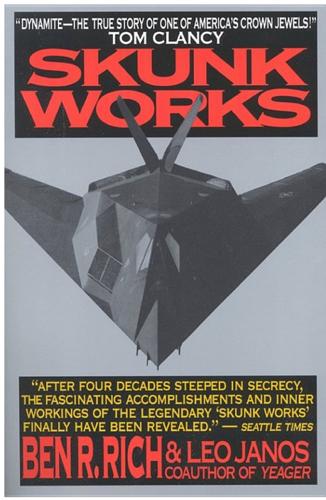
Skunk Works: A Personal Memoir of My Years of Lockheed
by
Ben R. Rich
and
Leo Janos
Published 1 Jan 1994
During Operation Desert Storm, the U-2 overflights monitored Iraqi tank movements, and its side-band radar proved effective in revealing the presence and configuration of enemy mine fields. In January 1993, when the outgoing Bush administration decided to bomb Saddam Hussein’s missile batteries in the southern “no-fly” zone, the U-2 was once again providing the vital intelligence data preliminary to the bombing. On the day before the bombing raid, I received a call at home from an official of the CIA. “Ben,” he said, “we just got a call from President-elect Clinton. He wants to know the altitude of the U-2. No one at this end is sure, so I thought I’d go straight to the horse’s mouth.”

In the Company of Heroes
by
Michael J. Durant
and
Steven Hartov
Published 1 Dec 2006
Between the No Fly Line and the DMZ is a strip, varying in width, into which unmarked air corridors are cut. If we had to, we could fly up into those corridors, just teasing the DMZ, and execute evacuations. There were many of these corridors laid out all across the peninsula. Every medevac pilot had to memorize the corridor layout, be able to cruise the No Fly Zone, fly up into each corridor, and return unscathed. There were no red flags or warning signs marking the DMZ below. If you crossed the point of no return, the South Koreans were supposed to fire warning shots across your nose. But if you were off your game, the North Koreans would happily let you come across, shoot you down, and take you, your crew, and your chopper captive—providing you survived the crash.
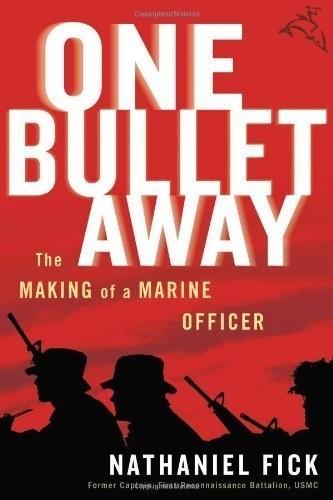
One Bullet Away: The Making of a Marine Officer by Fick, Nathaniel C.(October 3, 2005) Hardcover
by
Nathaniel C. Fick
Published 14 Apr 2006
Dozens of white tents stood in rows. No electricity, no hot food, and no showers for at least another week. We stood outside the tents, bemoaning our loss of Commando’s comforts, when an F-16 fighter jet screamed overhead waggling its wings. The jet was returning from a patrol over Iraq’s southern no-fly zone, and the pilot decided to motivate us. It worked. We started carving out a place for ourselves at Matilda and planning our training for the coming weeks. I woke up early one morning a week later, enjoying the silence in the tent. The platoon lived together in its own tent, while Gunny Wynn lived separately with the other staff NCOs, and I lived with the junior officers.
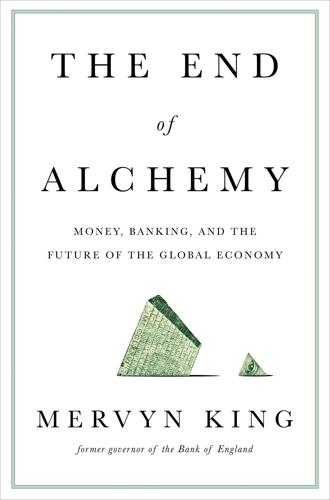
The End of Alchemy: Money, Banking and the Future of the Global Economy
by
Mervyn King
Published 3 Mar 2016
It is the unusual story of one country with two currencies, or, perhaps more accurately, a country divided into two halves, one of which had a government and a badly run currency and the other, which had no government but a stable currency. At the time of the First Gulf War in 1991, the Iraqi currency was the dinar. Following the war, Iraq was divided into two parts that were politically, militarily and economically separate from each other: southern Iraq was under the control of Saddam Hussein, and northern Iraq, protected by a no-fly zone north of the 36th Parallel, became a de facto Kurdish protectorate. In the south, Saddam’s regime struggled to cope with UN sanctions, and resorted to printing money to finance growing budget deficits. Unable to import notes printed abroad because of sanctions, the official Iraqi government started to print new notes that bore Saddam’s image.

Vertical: The City From Satellites to Bunkers
by
Stephen Graham
Published 8 Nov 2016
In July 2014, escalating conflicts in Iraq involving ISIS led Emirates to stop overflying Iraq; other major airlines continue to do so but at increased heights. Wheeler, cited in Sunshine Coast Daily, 18 July 2014, sunshinecoastdaily.com. 2Political theorist Mark Neocleous, remarking on the importance of the no-fly zone in contemporary policing and counter-insurgency war, observes that ‘one of the remarkable features of contemporary official discourse concerning air power is that it openly looks back and seeks to learn from the use of air power in colonial pacification campaigns of the 1920s.’ Mark Neocleous, ‘Police Power, All the Way to Heaven’, Radical Philosophy 182, November/December 2013, p. 5. 3In 2011, fully 24 per cent of the world’s 125,000 construction cranes were in the Gulf region. 4Geraldine Bedell, ‘Burj Khalifa: A Bleak Symbol of Dubai’s Era of Bling’, Observer, 10 January 2010. 5Ibid. 6Like most words describing status, quality, power or achievement, ‘supreme’ is itself a vertical metaphor.
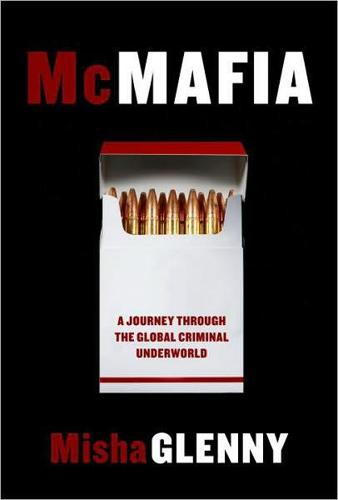
McMafia: A Journey Through the Global Criminal Underworld
by
Misha Glenny
Published 7 Apr 2008
He introduced Bokan to Montenegro’s leading politicians and businessmen, including the ambitious young prime minister, Milo Djukanovic. Linked by an entrepreneurial spirit, the two men were soon exploring possible areas of cooperation. The Black Pirate, as Bokan was known, had recently acquired two Ilyushin 76 transporter planes. At first, this looked like a poor investment, as NATO had imposed a no-fly zone over Serbia and Montenegro. But Bokan had uncovered a loophole that allowed planes to land in Montenegro “for technical purposes.” With help from his new Montenegrin friends, Bokan came up with his billion-dollar idea—selling untaxed cigarettes to the Italian Mafia. Bokan filled his cavernous Ilyushins with cigarettes imported to one of the free trade zones in Europe direct from the factories of all major tobacco manufacturers in America and Western Europe.

Winning the War on War: The Decline of Armed Conflict Worldwide
by
Joshua S. Goldstein
Published 15 Sep 2011
Operations undertaken by Western military forces are much more expensive than UN operations drawing on troops from poorer countries. In 1999, costs to deploy Western European NATO forces in Kosovo exceeded $125,000 per soldier per year, and for each American soldier, $200,000 per year. In Libya in 2011, a NATO-enforced no-fly zone cost more than $100 million just for the opening volley of cruise missiles. Russia and the other members of the CIS, which loosely ties together most of the former Soviet republics, have run four major peacekeeping operations—in Moldova, Tajikistan, and two in Georgia. These latter two cannot be considered successes, since the status quo there broke down in 2008 with a brief but intense war between Russia and Georgia.

Convergence Culture: Where Old and New Media Collide
by
Henry Jenkins
Published 31 Jul 2006
I f W K L P is firmly resolved on the 11/10 episode we will all be in for a huge let down. Even those who guessed right will only celebrate and gloat briefly and then be left empty inside." Television would have to become more sophisticated if it wanted to keep up with its most committed viewers. space because the security-conscious Burnett negotiates a "no fly zone" policy over the location. D a n uses the C o m Sat (Communications Satellite) images and sophisticated topographical maps to refine his understanding of the core locations. Meanwhile, Wezzie researches the ecosystem and culture. Everything she learns ends u p on Survivor maps and becomes a resource for the fan community.

How Everything Became War and the Military Became Everything: Tales From the Pentagon
by
Rosa Brooks
Published 8 Aug 2016
Recent activities undertaken by or with the assistance of AFRICOM include, for instance, the construction of school classrooms in Chad; research on “the Association of Sexual Violence and Human Rights Violations with Physical and Mental Health in Territories of the Eastern Democratic Republic of the Congo”; cattle vaccination in Uganda, designed to provide healthy cattle to internally displaced civilians returning to their homes; activities to combat drug trafficking through the West Africa Cooperative Security Initiative; and the construction of closed wells with solar power pumps in Senegal.10 Other AFRICOM initiatives included the establishment of an East African Malaria Task Force to combat “one of the biggest killers on the continent: the mosquito”;11 the creation of a news and information website aimed toward local audiences in the Maghreb, featuring “analysis, interviews and commentary by paid Magharebia correspondents”;12 the construction of a maternal and pediatric care ward at a Ugandan hospital; collaboration with Botswana’s military to “promote Botswana’s national program of education, HIV screening and male circumcision surgeries”; cooperation with the Sierra Leone Maritime Wing and Fisheries Ministry, “resulting in the apprehension of an illegally operating fishing vessel”;13 and, of course, counterpiracy efforts in collaboration with host country governments through the Africa Partnership Station (APS) and Africa Maritime Law Enforcement Partnership (AMLEP).14 AFRICOM also conducts or facilitates a wide range of other activities, some of them more traditional, including various counterterrorism programs run through “Operation Enduring Freedom—Trans Sahara” and a range of efforts to help capture Lord’s Resistance Army leaders in Central and East Africa. In 2011, AFRICOM coordinated its first large-scale military operation when President Obama approved Operation Odyssey Dawn, which aimed to enforce the U.N.-sanctioned no-fly zone in Libya and eliminate the Libyan government’s ability to threaten civilians.15 Whether AFRICOM represents a viable model for the future of the U.S. military naturally depends on your point of view. To traditionalists within the military, the AFRICOM approach is downright dangerous: it’s a slide away from the military’s core competencies, and the very apotheosis of mission creep.

Second World: Empires and Influence in the New Global Order
by
Parag Khanna
Published 4 Mar 2008
Even the Soviet Union condemned Saddam, with Gorbachev remarking that the weapons it had sold to Iraq were intended for its defense, not to invade its neighbors.2 Saddam remained afloat for over a decade by manipulating the UN oil for food program while sanctions degraded the public health system and prevented an opposition from incubating. Western containment was more like “infanticide masquerading as politics.”3 The U.S.-imposed northern and southern no-fly zones effectively cut Saddam off from those resource-rich regions, whose current struggle to return to a pre-Iraq past through a sovereign future is playing itself out in a repeat of what Sir Arnold Wilson described as Mesopotamia’s “anarchy plus fanaticism…with little or no nationalism.”4 Since individual Iraqis pledge their loyalty to clan, ethnicity, or sect over state, the promises of federalism failed to stem the civil war that has accelerated the country’s re-Balkanization—including ethnic cleansing, mass emigration, and population exchange—through which a Kurdistan, Shi’astan, and Sunnistan are gradually coming to life.
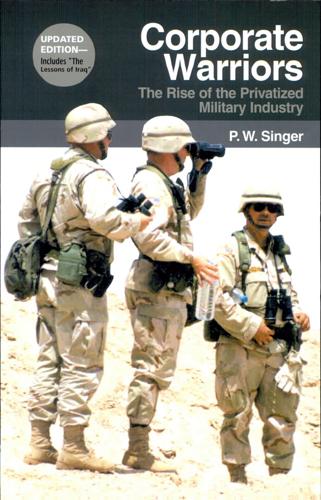
Corporate Warriors: The Rise of the Privatized Military Industry
by
Peter Warren Singer
Published 1 Jan 2003
The Balkans Business Bonanza Similar to the experience of MPRI, a major boost to BRS came from the crisis in former Yugoslavia. Brown and Root's initial business exposure to the Balkans war came in early 1995, when it deployed in support of Operation Deny Flight, under which U.S. planes patrolled the no-fly zone over Bosnia. BRS provided support services to the U.S. troops operating out of Aviano air base in Italy, with the contract amount running to S6.3 million.30 The biggest contract in the sector's history came later in 1995, when over 20,000 U.S. soldiers deployed to the region as part of the NATO IFOR peacekeeping mission.

Good Economics for Hard Times: Better Answers to Our Biggest Problems
by
Abhijit V. Banerjee
and
Esther Duflo
Published 12 Nov 2019
In other words, the dream of a tax reform that leaves “99 percent of the taxpayers with a lower tax bill” would guarantee that the United States continues to be unable to redistribute much to those falling behind. Tax reform needs to apply not solely to the ultra-rich, but also the merely rich and even the middle class. As things stand, this is a no-fly zone for US politicians on the left and the right. Proposing to raise taxes on (almost) everyone is not popular. In our survey, 48 percent of respondents thought small business owners paid too much in taxes, and less than 5 percent thought they paid too little. The same was true for salaried workers.4 The hardest part may be to persuade the average taxpayer in the United States to pay more and get more public services.

Leviathan Wakes
by
James S. A. Corey
Published 14 Jun 2011
Embarrassed, he zipped back up. “Those ships don’t make any sense to me, Boss,” Alex said. “A half dozen ships flyin’ kamikaze missions with nukes strapped to their hulls might make a dent in a battlewagon like the Donnie, but not much else would. She opens up with her point defense network and rail guns, she can create a no-fly zone a thousand klicks across. They could be killin’ those six ships with torpedoes already, ’cept I think they’re as confused about who they are as we are.” “They’ll know they can’t catch us before the Donnager picks us up,” Holden said. “And they can’t take her in a fight. So I don’t know what they’re up to.”
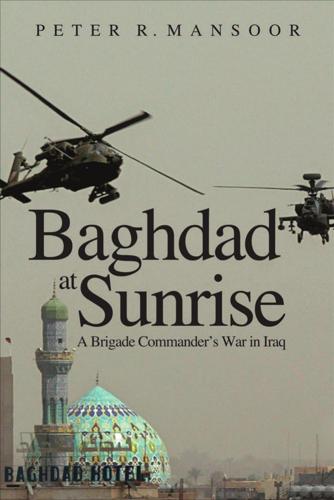
Baghdad at Sunrise: A Brigade Commander's War in Iraq
by
Peter R. Mansoor
,
Donald Kagan
and
Frederick Kagan
Published 31 Aug 2009
Turkish officials announced that as many as ten thousand troops could be sent, a significant addition to the coalition force structure. The big question, however, was where the troops would be deployed. Turkey shares a 220-mile border with Iraq. U.S. aircraft operating from Turkey had launched air strikes against Iraq during the 1991 Gulf War, and during the 1990s aircraft operating from Turkey had enforced the northern no-fly zone, which had ensured Kurdish autonomy. A Turkish ground force operating in Iraq, however, was a significantly different and politically much more delicate matter. The Turkish government wanted its forces to operate in the north in areas adjacent to its borders. This deployment would certainly ease logistical constraints on the Turkish army, but its real purpose undoubtedly was to enable Turkey to fight guerrillas from the Kurdistan Worker’s Party, or pkk, on Iraqi soil.

The WikiLeaks Files: The World According to US Empire
by
Wikileaks
Published 24 Aug 2015
Some 25 to 30 million Kurds are scattered through those countries and eastern Turkey, and have long been discriminated against by governments in Ankara, Damascus, Baghdad, and Tehran. Kurds make up the largest ethnic group in the world without a country of their own. “Protecting” the Kurds was a major rationale for Washington’s pre-invasion embargo of Iraq, and from 1992 to the invasion in 2003 the US enforced a “no-fly zone” over Kurdish areas in Iraq’s north. It is therefore unexpected to read that the US has also actively aided the Turkish government’s counter-insurgency against the Kurds—a conflict that has killed more than 40,000 people: The PKK [Kurdistan Workers Party], which seeks to carve off the primarily Kurdish portion of Eastern Turkey by force of arms has intensified its terrorist campaign in Turkey: over 150 Turkish security forces have died so far in 2006, a dozen in the past week alone.
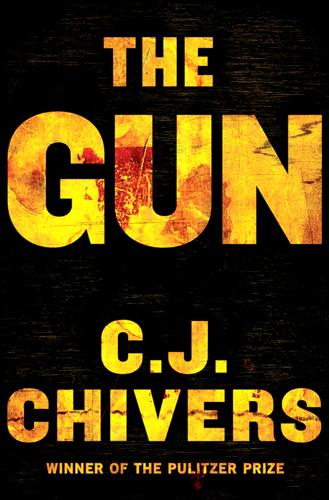
The Gun
by
C. J. Chivers
Published 12 Oct 2010
Mahmoud was shot in spring 2002 in northern Iraq, a region that had been an all-but-forgotten seam in the wars in the Middle East. No one much noticed that day, though a new war was gathering. The American military had chased the Taliban from Kabul several months before, and President George W. Bush’s administration had switched focus. The northern portion of Iraq, loosely protected by a no-fly zone, was a semiautonomous Kurdish enclave, a statelet within a state, where Washington was quietly renewing engagement with the Kurds, seeking allies for the war ahead. Ryan Crocker, an American diplomat, had come to Sulaimaniya, capital of the eastern portion of the Kurdish zone, to meet with the officials of the Patriotic Union of Kurdistan, or PUK, one of two principal Kurdish parties.
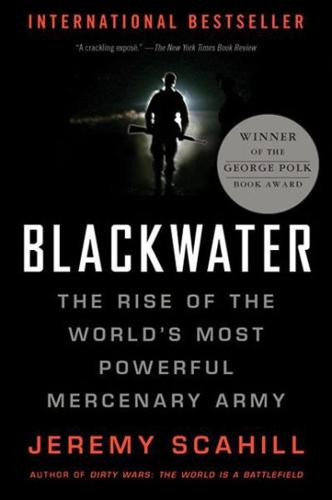
Blackwater: The Rise of the World's Most Powerful Mercenary Army
by
Jeremy Scahill
Published 1 Jan 2007
After shouting at her, Kelly recalled, the man calmed down and offered her tea at his home. To her, that was evidence that “even in Fallujah, there might have been a chance to build fair and friendly relations, in spite of the suffering inflicted on ordinary Iraqis. But those chances were increasingly squandered by maintenance of economic sanctions and eventual bombing of the no-fly zones.” When U.S. Forces rolled into Iraq in April 2003, it didn’t take long for them to pour gasoline on the already volatile anti-American rage born in Fallujah at least twelve years earlier. U.S. Special Forces took Fallujah in April, early on in the invasion, but soon left the city.12 Local Iraqis said they agreed to surrender the conservative Sunni city without a fight on the condition that U.S. troops would not occupy it for more than two days.13 As in many Iraqi communities, the people of Fallujah began to organize themselves and to take stock of the consequences of the earth-moving developments in their country.

Liberalism at Large: The World According to the Economist
by
Alex Zevin
Published 12 Nov 2019
On this score, the Economist did not always give Barack Obama the credit he deserved, grumbling that he was too hesitant to use the hard power at his disposal. In Libya, all went well. When Arab Spring protests gave way to an armed rebellion against Muammar Qaddafi in February 2011, the paper called for a NATO-enforced no-fly zone from the start. Soon it was demanding aerial bombardments, a naval blockade and regime change – to guard ‘against the threat of butchery in Benghazi’ and give ‘a region of 350 million Arabs stuck in poverty and dysfunctional politics’ a ‘chance to come alive’. Such an attack was ‘unarguably legal’, based on a ‘helpfully elastic’ UN resolution ‘endorsing “all necessary measures” to protect civilian life’, opposed only by ‘the pacifist brigade’.112 Some 17,000 air sorties later, it was ‘a good war’ for NATO: admirably restrained, its pilots ‘keeping collateral damage to a minimum’, and with Europe supposedly in the lead of an operation essentially conducted by the US, a ‘template for future operations’.113 Concerning Syria, however, the president was a disappointment.
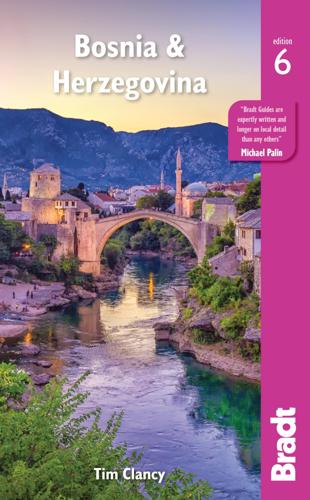
Bosnia and Herzegovina
by
Tim. Clancy
Published 15 Mar 2022
While Međugorje is viewed by most as a holy site, the cross above Mostar is considered by many as a very provocative landmark. During the war, from the exact spot where the 35m cross has been erected, the Croatian forces pummelled east Mostar with artillery and anti-aircraft fire. Because of the no-fly zone enforced by NATO during the war there were no planes to fire at so the anti-aircraft weapons were fired at civilians. It is a painful reminder to many citizens of Mostar of not only the brutal war that divided the city but the deep rifts in relations between the ethnic groups today. On a lighter note, you can also find a golden statue of Bruce Lee [Click here B3] on the western side of the city in Park Zrinjevac, the first public monument in the world dedicated to the actor, which was unveiled in 2005.

Wired for War: The Robotics Revolution and Conflict in the 21st Century
by
P. W. Singer
Published 1 Jan 2010
Merely the appearance of a hostile intent to attack is enough; for example, they argue that if a radar targets a plane, the pilot can fire first, rather than simply waiting to be blown out of the sky. This expanded right of self-defense was used by the United States in the Gulf of Tonkin incident prior to the Vietnam War, the air battles with the Libyans in the Gulf of Sidra in the 1980s, and during the decade of airstrikes from 1991 to 2002 while enforcing the “no-fly zone” against Iraq. This question gets fuzzy, though, when the “self ” in self-defense is not a person but an unmanned system. Take the above incidents and substitute robotic drones for the planes piloted by humans. If an unmanned plane flying near the border of another nation is fired on, does it have the right to fire back at that nation’s missile sites and the humans behind them, even in peacetime?

A Classless Society: Britain in the 1990s
by
Alwyn W. Turner
Published 4 Sep 2013
Britain, and the EU more generally, she said, ‘were like an accomplice to massacre’. The defence secretary, Malcolm Rifkind, dismissed her comments as ‘emotional nonsense’. Instead the British government steadfastly refused to become embroiled in the conflict. In international circles, the creation of a force to defend Croatia was proposed, a no-fly zone in Bosnia was suggested, air strikes against Bosnian Serbs were put forward. Britain objected to all, with the foreign secretary, Douglas Hurd, singled out as the stumbling block to further intervention. ‘Any time there was a likelihood of effective action,’ observed Tadeusz Mazowiecki, the former Polish prime minister and now a UN emissary to Bosnia, ‘a particular Western statesman intervened to prevent it.’
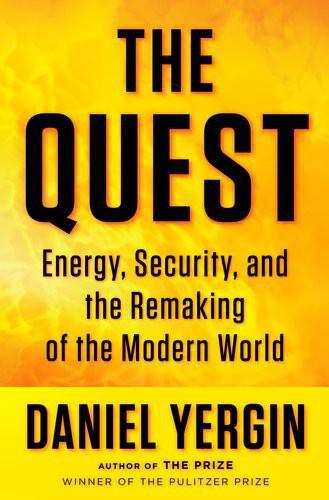
The Quest: Energy, Security, and the Remaking of the Modern World
by
Daniel Yergin
Published 14 May 2011
Altogether, unfolding events throughout the region had demonstrated that social instability had become a critical factor for energy security. In Libya protests turned quickly into a civil war that divided the country between rebels in the east and Ghaddaffi forces in the west. As Ghaddaffi’s forces advanced on Benghazi and what seemed likely to be a bloodbath, the Arab League called for a no-fly zone, and U.S. and European forces, operating under U.N. and NATO authorization, intervened on the side of the rebels. By March of 2011, virtually all of Libya’s oil production was disrupted, removing about 1.5 percent of supplies from the market. But that, combined with rising demand, started to narrow once again spare capacity.

Fall; Or, Dodge in Hell
by
Neal Stephenson
Published 3 Jun 2019
Corvallis wondered if the authors of this hoax had waited for a cloudy day in Moab before pulling the trigger. He went up to the cockpit so that he could look out the windshield over the pilots’ shoulders. The weather was generally clear, but clouds were stuffed like cotton into low places in the landscape, including the valley of a prominent river that Corvallis assumed was the Colorado. No-fly zone or not, people could fly over Moab all day long and not be able to come back with a definitive answer as to whether it still existed. “We need to land,” Corvallis announced. “The Moab airport is closed,” Frank told him. Without thinking, Corvallis said what Dodge would have said: “I didn’t say anything about an airport.